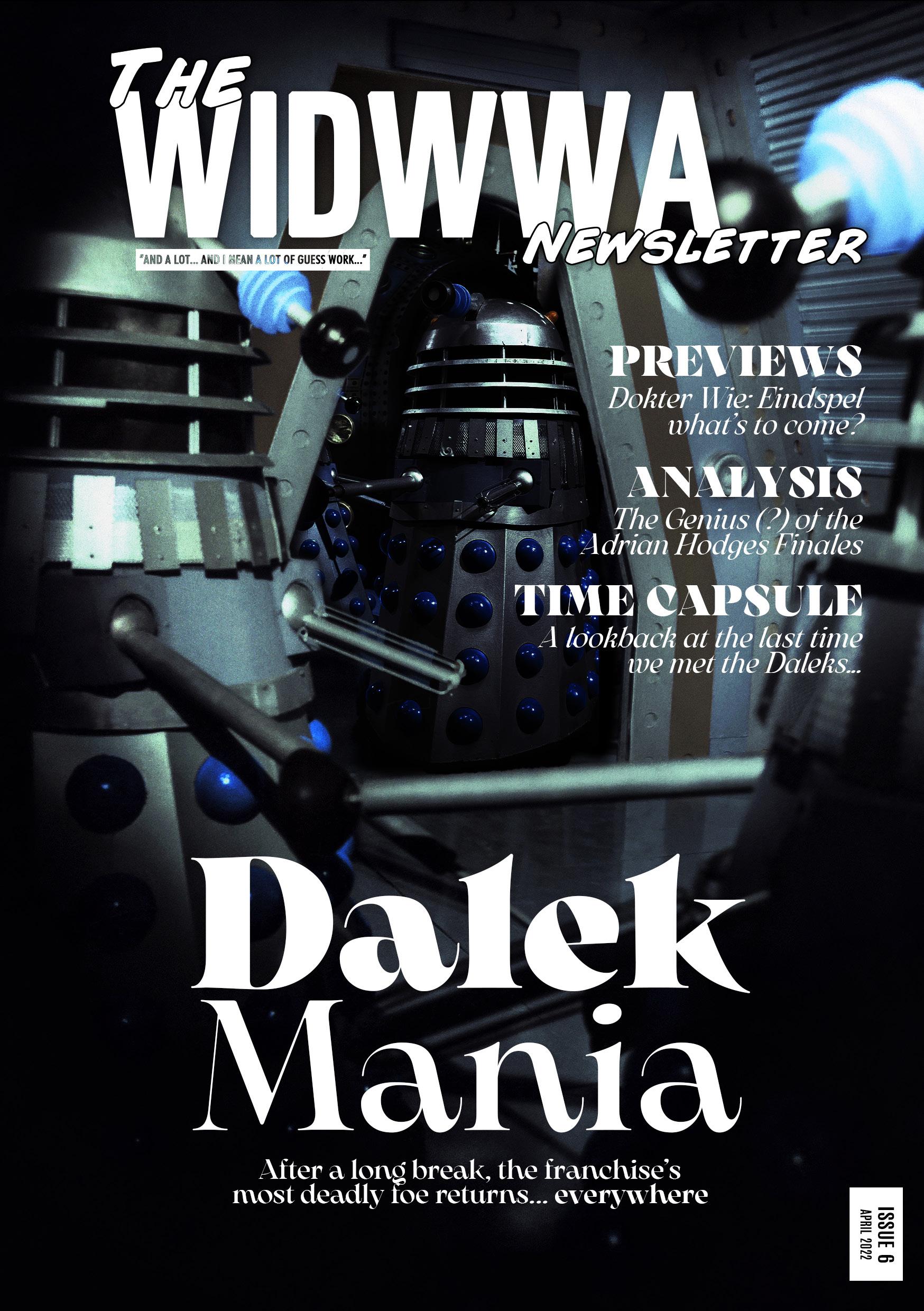
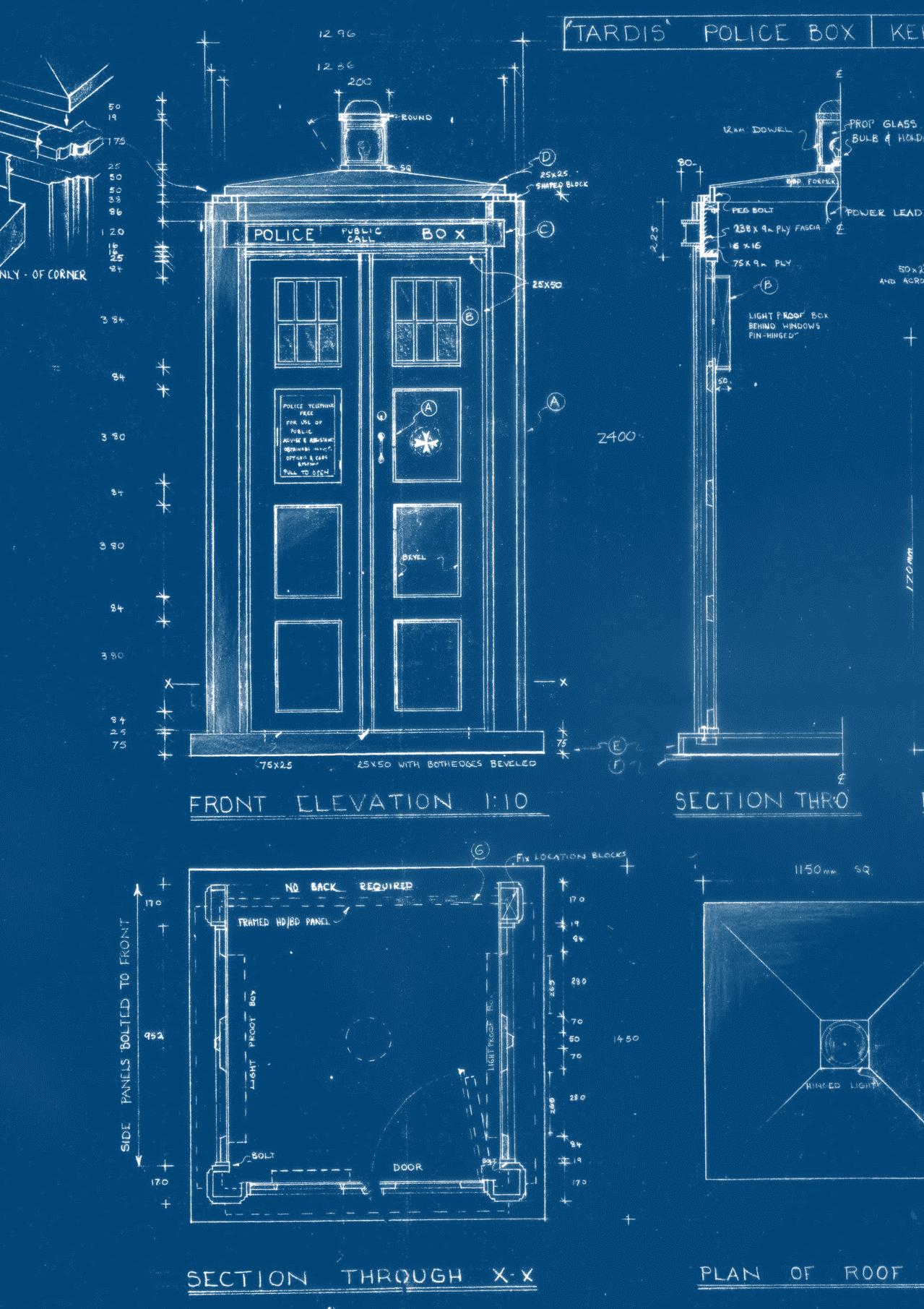

Regulars 2 WIDWWA News 4 The Companion Factor 18 Logo-polis 20 Time Capsule 22 Reviews 24 Features The Oldest Foe 6 Genius of the Hodges Finales 10 Previews Dokter Wie: Eindspel 5 The End Board - Part II 16
Happy April everyone, and welcome to the 6th issue of this newsletter. Yes, somehow, we have been going for half a year now!

The last month for WIDWWA saw Doctor Who: Adventures complete its third series (reviews of which you can find toward the back of this issue), and Dokter Wie begun its third and final series (reviews of which you can also find toward the back of this issue). The reception to Adventures, especially, has been fantastic, and I’m glad you were all engaging with the series so much. We have a lot to look forward to in the coming months, as despite Season 55 only ending in November, we’ll be back with Season 56, very soon!
I chose the subject matter for this issue, that of the Daleks, because for the first time in a long time, the Daleks have really come into focus, in the WIDWWA universe. The reason this has happened is partly a celebration of the 60th Anniversary, and also because Mal Young knows Daleks work. However, having covered Dokter Wie extensively last issue, and with only this issue to go until we get to talk about ‘The Daleks’ Master Plan’ (2022 Edition) in detail, I thought a retrospective on the Daleks in the WIDWWA universe would be very welcome. That also led me to decide to cover ‘The New Empire’ in the Time Capsule segment, this month, the second most recent time the Doctor met the Daleks in a television story... it’s interesting to see where we picked off, four years ago!
It was Sandra Armstrong’s turn for the Companion Factor this month. Originally, I had wanted to do Bernice, for Dalek related reasons, but I thought it would be best to cover this era of companion,
Dokter
Dokter
Dokter Wie
Dokter Wie
Releases will appear on the WIDWWA
(widwwa.wordpress.com)
following the release of the upcoming WIDWWA book, which will be looking at WIDWWA in more detail, from 1990-98. I decided on Sandra because, simply, she had been requested a couple of times, and I know she’s popular with a lot of people. I also thought some variety, from Daleks, actually might be needed. You’ll notice, despite Sandra not being a character on Doctor Who: Adventures, she has been drawn in the animated style from that show. This is much like the 16 Doctors you see below this text and is the best way I have found to represent what the character and costume is “supposed” to look like, without the limitations of my technological abilities. Please don’t go spreading rumours about Sandra appearing in Adventures, because that’s nonsense.
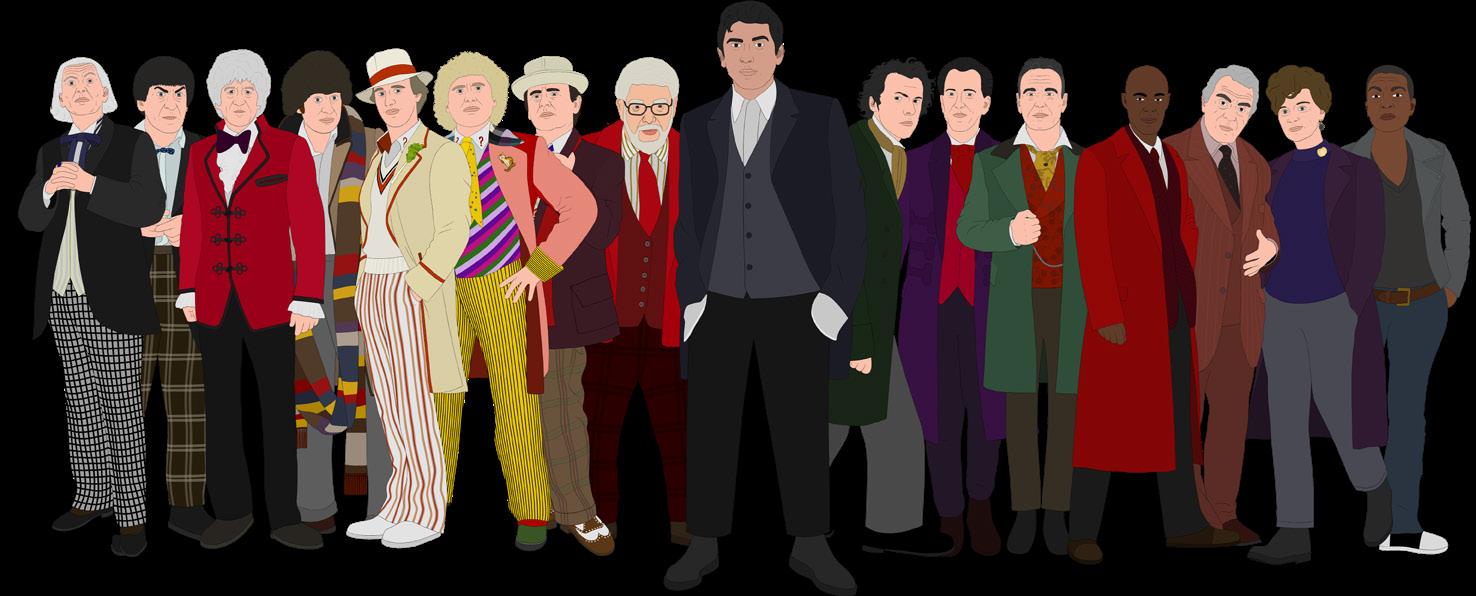
Welcome DDWF 3 April Releases 9 April - 19:00
Wie - Season 3, Episode 3 16 April - 19:00
Wie - Season 3, Episode 4 23 April - 19:00
- Season 3, Episode 5 30 April - 19:00
- Season 3, Episode 6
Wordpress
at the time specified on the release schedule, on the day specified on the release schedule. All times are in UK time.
WIDWWA
Steven Moffat to become Showrunner of Sitcom for
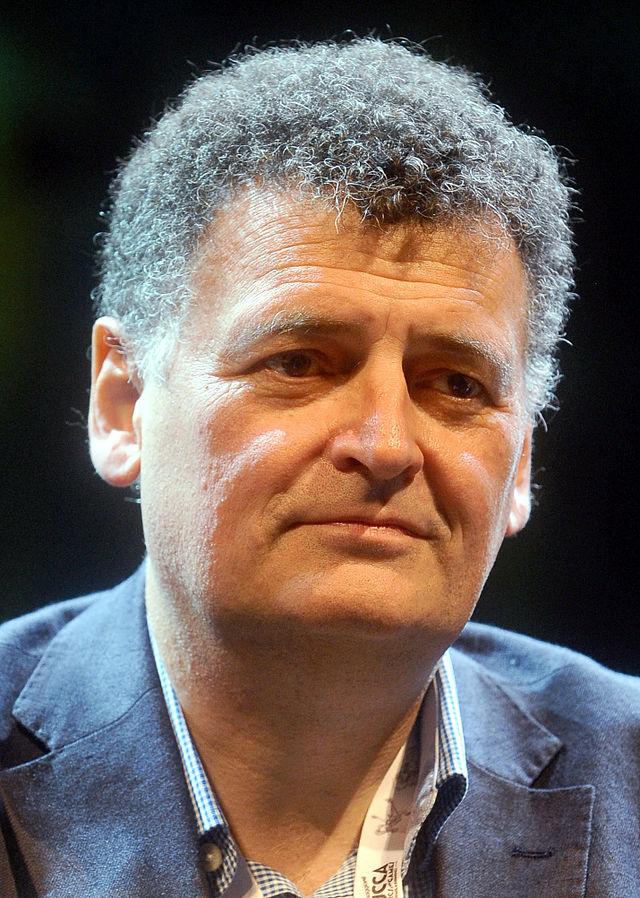
BBC Three
21 Marcch 2022
It has been announced that former Doctor Who script editor, and writer, Steven Moffat has been appointed showrunner of BBC Three’s recently commissioned series set in the Doctor Who universe. It has also been announced that the series will be a 6x30 minute situation-comedy series.
The series was created by Ronald D. Moore, who has also penned the first episode of the show. The other five episodes will be handled by Steven Moffat, as well as any future commissioned series. Moffat says, “Jane [Espenson] approached me, earlier this year, to take the reins of this very exciting show, and I just couldn’t turn down the opportunity. We’re aiming for young people, just before the watershed, who want to watch a science-fiction comedy series, also set in the confines of the Doctor Who universe.”
It is unknown who will be starring in the series, but many have guessed a returning Doctor, like the franchise’s other ongoing television shows.
Jane Espenson says, “I can’t tell you much about it, but I can say that there will be a few familiar faces, when we begin to roll cameras in June... you’ll know more very soon.”
The series will be the first to be produced by, newly founded production company, WhoStudios, and filming will begin in June.
All the important announcements from March from the WIDWWA universe!
Doctor Who: The Daleks’ Master Plan to launch

8th May 30 March 2022
The 56th Season of Doctor Who will launch on 8th May 2022, with the six-part serial, The Daleks’ Master Plan.
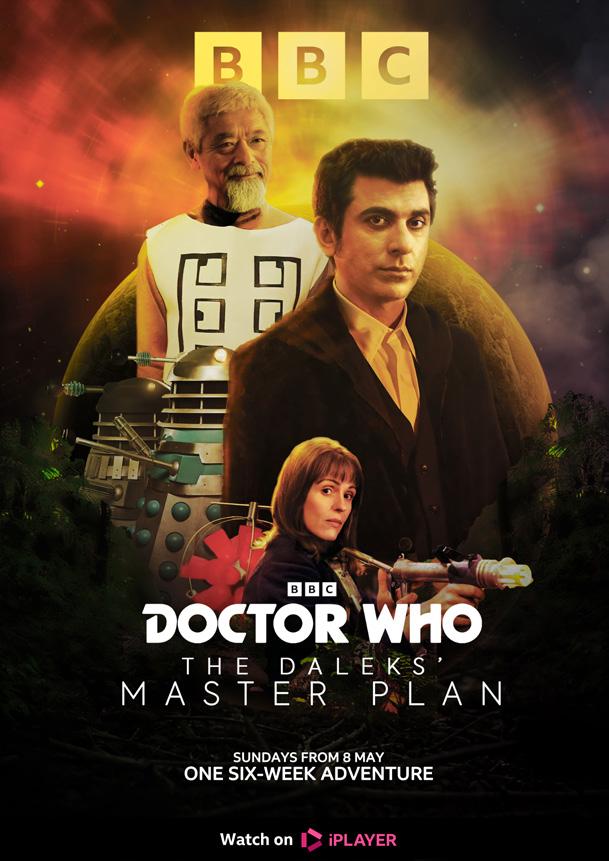
Previously released details about the serial describe it as a “retelling with a twist” of the original near-entirely-missing 1965 serial.
The six-episode serial will be showrun by Ronald D. Moore, returning especially, as part of Doctor Who’s 60th Anniversary celebrations. Season 56 will air on BBC One, in the United Kingdom, however, around the rest of the world (including the United States), it will be the first season to be released exclusively on Paramount Plus.
NEWS
4
Episode Previews
Season Three - Episode Three
Season Three - Episode Four
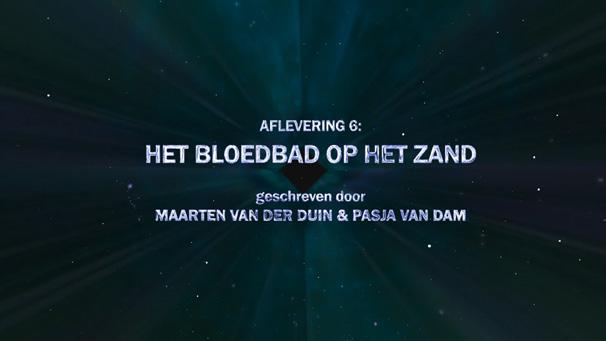
Last time we saw the Dokter and Evert, the TARDIS landed in the middle of Ancient Rome, following the Daleks. Now, Dokter Wie, had two choices here... firstly, they could have come up with an original story, or secondly they could have taken a pre-existing story set in Rome, and shoehorned the Daleks into it. They chose the second, because for this episode, we find the Daleks shoehorned into Rona Munro’s Season 31 serial ‘Pipe Dreams’.
Season Three - Episode Five
With the writers of Dokter Wie unwilling to create an original Dalek story set in Rome, you’d be forgiven for thinking they were leaving original stories out this year... however, this episode is actually an original story. The title translates to ‘The Doctor’s Warning’, and mostly takes place on Gallifrey. What else can you expect? Well that’ll be far too spoilery, but I suppose telling you the Daleks are in it won’t hurt?
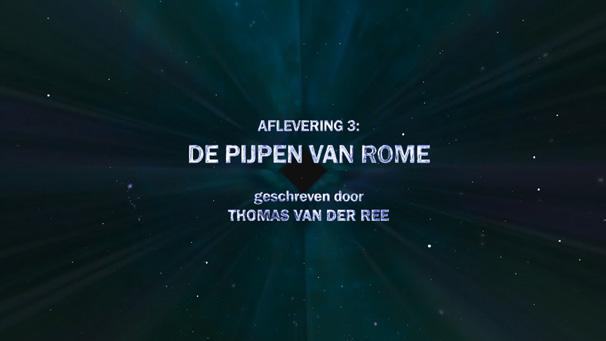
Season Three - Episode Six
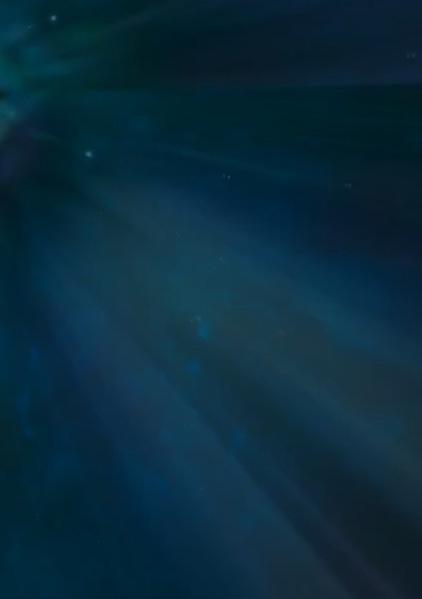
After a brief intermission, we return to the actual plot of ‘Doctor Who: Endgame’. ‘The Great Museum’ is the English title of this episode, and you might remember there’s a whole sequence in Endgame set in a, well, great museum. Take that sequence, give it a run time of 45 minutes, and then you have this episode. Expect Daleks again, and the Oplichter, of course.
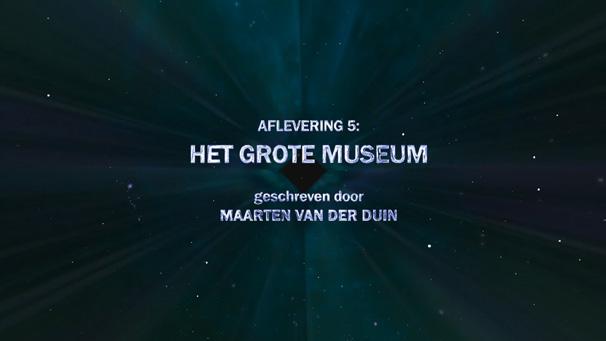
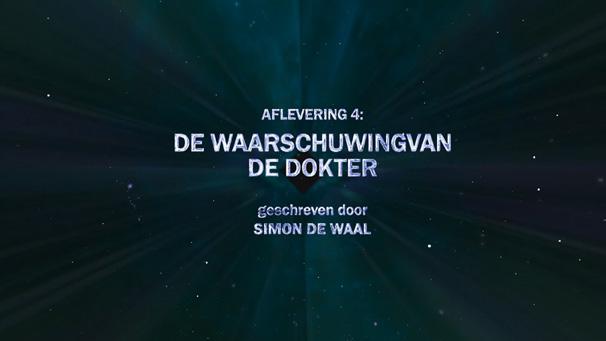
‘The Massacre on the Sand’, if you know Endgame, you have a fairly good idea of what happens, here, in the sixth instalment of this ten-part saga. So, apart from the fact that “someone” will die, everything else in this episode will remain a surprise... expect surprises, because it might not go just the way that you expect it to...
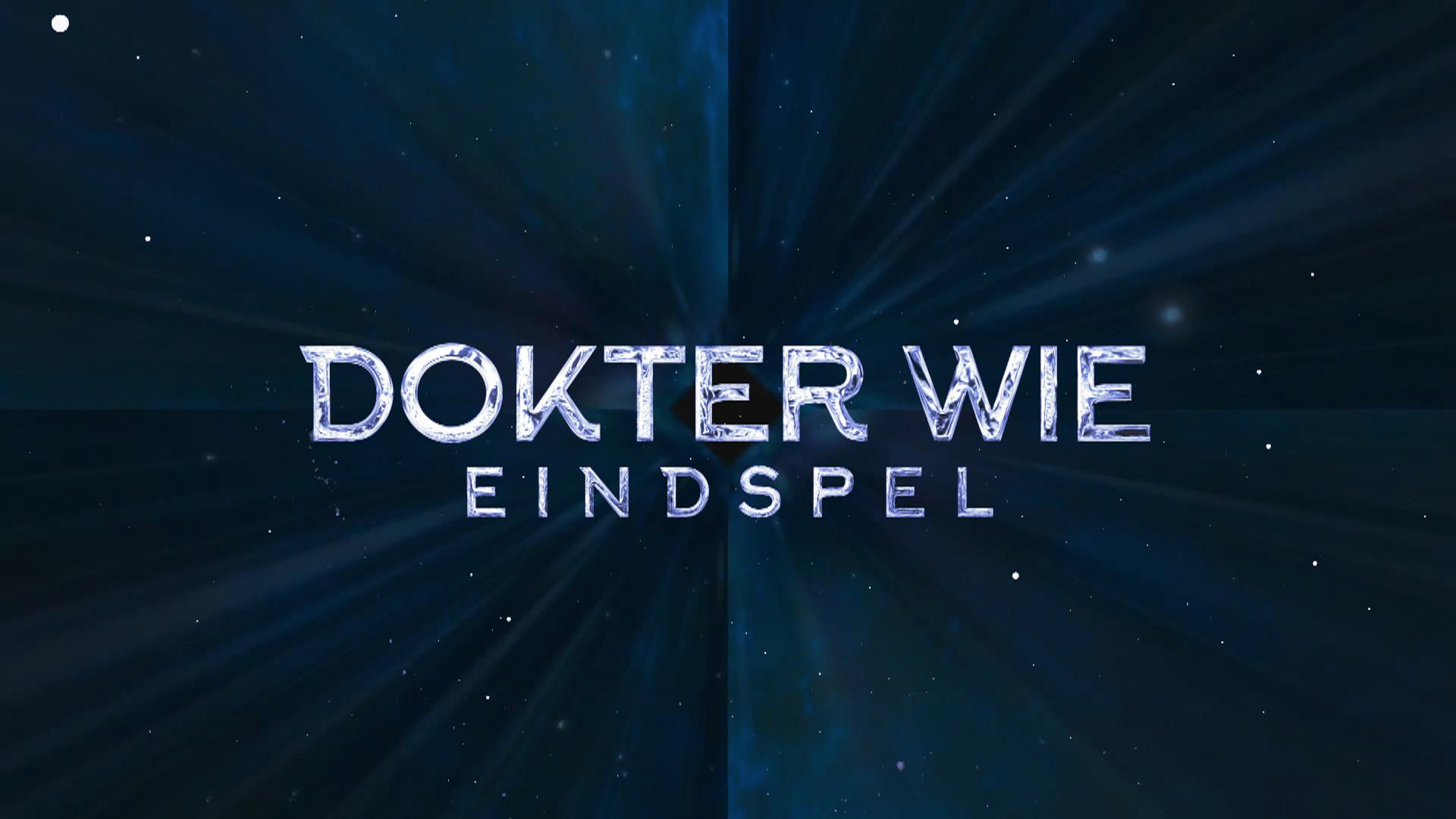
5
THE OLDEST FOE
The first answer in a word association game for “Doctor Who” is “Daleks”, and if that isn’t your first answer, it’s most definitely your second after “TARDIS”. The Daleks were the first alien enemy the Doctor ever encountered on screen, appearing in just the fifth episode of the show, ‘The Dead Planet’... what happened next is history, and the Daleks grew to be, not just Doctor Who’s most famous enemy, but a staple of British popular culture.
In Doctor Who’s 1963-89 run, there were just 14 Dalek stories (15 if you count Frontier in Space), which really wasn’t a lot when you consider there were 26 seasons, and that the Daleks only appeared in about half of them. In the real-world, the Daleks have managed to pop up every 5 seconds in the New Series, as the number of Dalek stories has increased from 14, at the end of Classic Who, to now 28 stories, and if you included cameos, well... we’d be here all day. The question you’ll be wondering now is... what is that figure in WIDWWA? Well, if we go from 14 stories, in 1989, and add all the WIDWWA Dalek stories (including the upcoming Daleks’ Master Plan serial), that give us exactly 28 stories too... which is a really odd coincidence. Now, I didn’t include ‘Vexterminate’ or their appearances in ‘Adventures’ or the foreign adaptations, so keep that in mind.
The reason you’re sat here, reading about the Daleks in WIDWWA, however, is because while it’s taken WIDWWA 16 years longer to reach the same amount of Dalek stories as the New Series, we’ve just jumped into a whole load of Daleks, with them
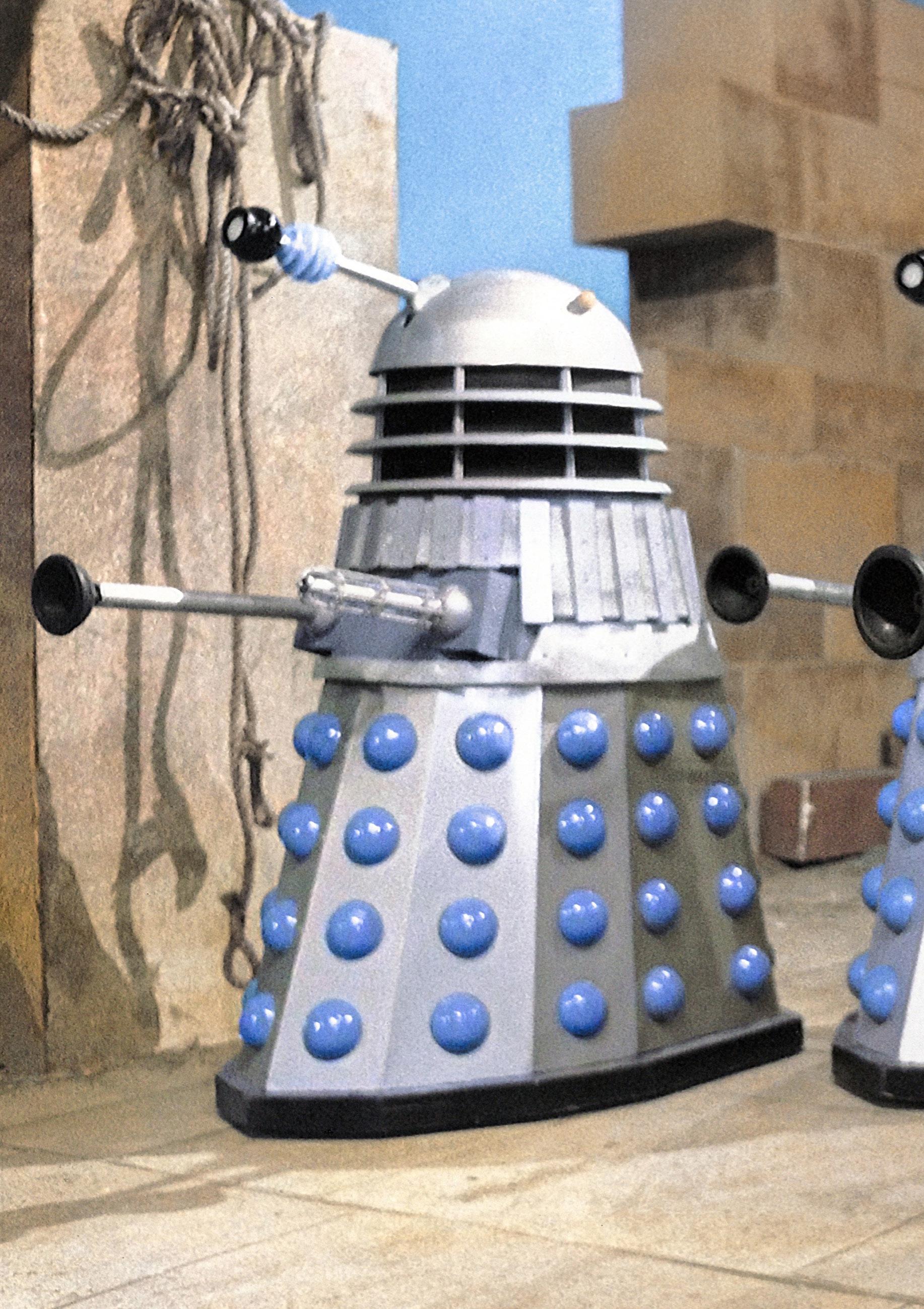
seemingly appearing everywhere. Remember, before the Daleks’ Master Plan, they had only appeared in a very small role in ‘Terror of the Daleks’, against a fake Doctor, and before that it was four years ago, with ‘The New Empire’. Now, we’ve got Daleks in ‘Doctor Who: Adventures’, as the “big bad” for Season 4; we’ve got Daleks in ‘Dokter Wie: Eindspel’, and we’ve got Daleks (very prominently, duh) in ‘Doctor Who: The Daleks’ Master Plan’. There is not escape from the Daleks at the moment, and there might even be more. So, let’s take a look back at how we got here, and the 12 Dalek stories which proceed May’s epic serial.
In line with how Classic Who tended to operate, there was a gap of five years between ‘Remembrance of the Daleks’ and our first WIDWWA Dalek story, ‘Conquest of the Daleks’. This story aired in July 1993, launching Season 30. Like with Jon Pertwee and Peter Davison before him, it took until Richard Griffiths’ third season to face off against the Doctor’s most deadly enemy. The story, like Remembrance, penned by Ben Aaronovitch, was the fourth and final part to the Dalek Civil War arc. It looked at the consequences of Skaro’s destruction and saw the Imperial Daleks triumph over the Renegade Daleks... but only because Davros and the Doctor join forces.
It wouldn’t be for another 2-and-a-half years that the Daleks returned, this time for Griffiths’ final outing as the Doctor, and once again, penned by Ben Aaronovitch. This five-part serial, which closed off 1995, saw the Daleks as one-unified force again,
6
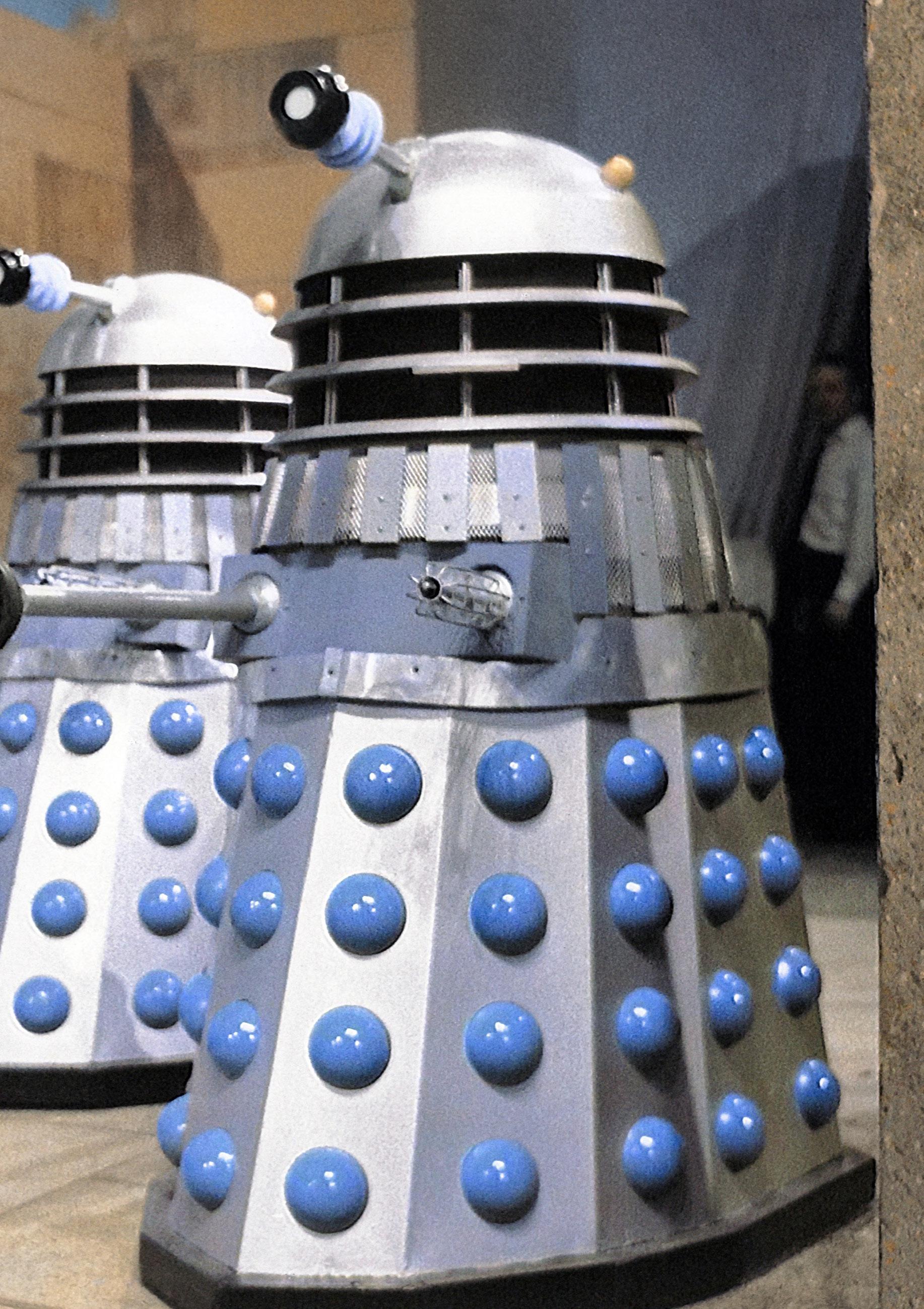
7
focused on conquering the universe. However, it seems they have a darker plan at work, as we come into the plot with the Daleks finding a memory-less Doctor in a suspended animation pod. The story is an epic, and saw not just the Doctor die, but also Bernice, as pretty much everything goes wrong. Alongside ‘The Caves of Androzani’ it’s one of the grimmest regeneration stories ever produced.

Subverting the status quo, as happened in 1984/1985, the very next season saw another Dalek story. Only two stories fell between ‘Hatred of the Daleks’ and ‘The Time Ravagers’, the second of which saw the Ninth Doctor pitted against the foes who had killed him, less than a year beforehand (for viewers at least). While the story is entirely separate to ‘Hatred of the Daleks’, and written by newcomer, Nicholas Briggs, emotionally the story was essentially a sequel to ‘Hatred of the Daleks’, allowing opportunity to explore the Doctor’s traumatic previous encounter with the Daleks. This was Briggs’ first contribution to the show, and it was during production that he noted to Stephen Garwood that he could also do a Dalek voice... from here on out, Briggs soon became the sole voice of the Daleks.
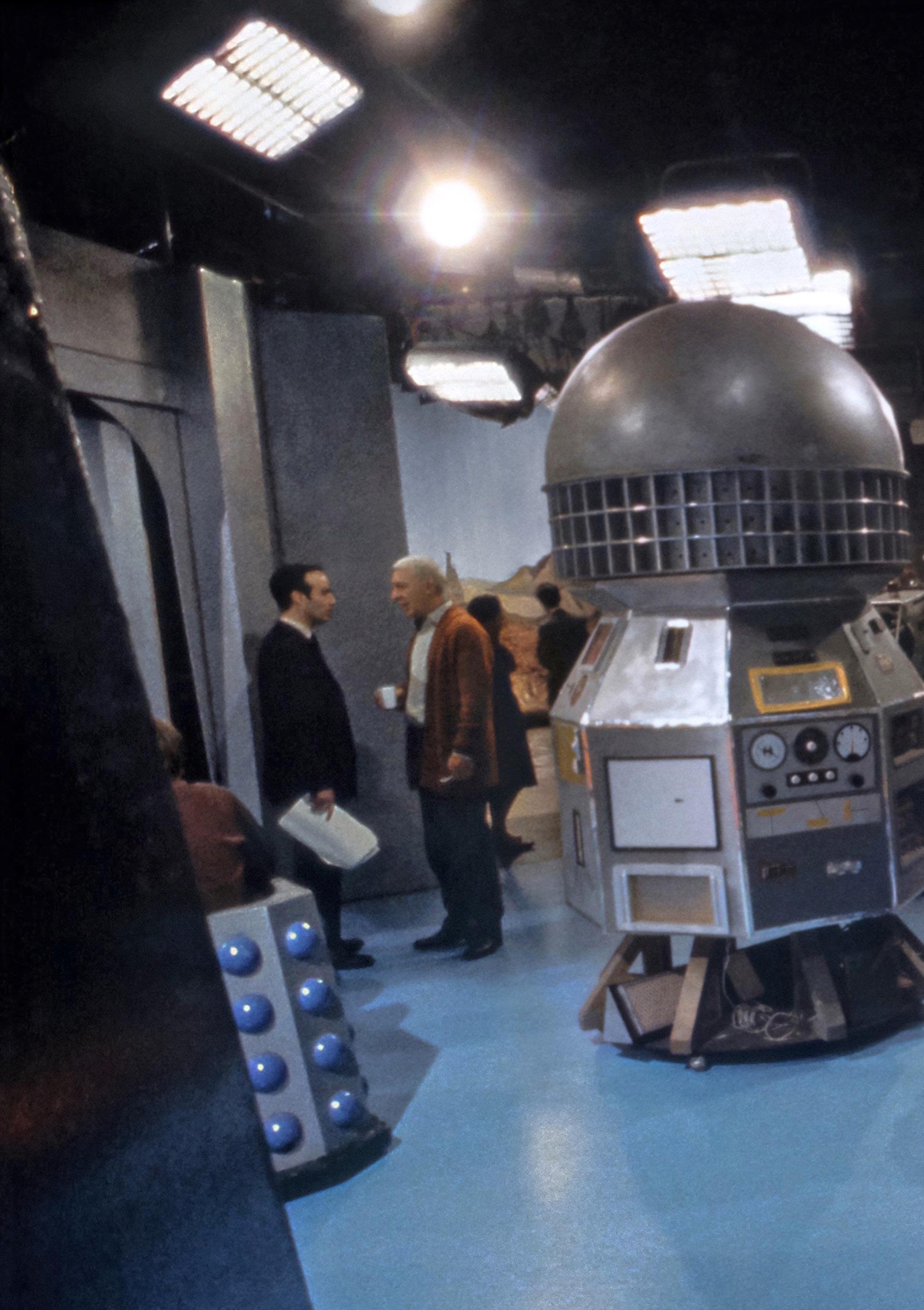
Despite, ‘The Time Ravagers’ being Michael French’s third ever story, and he went onto have 5 full seasons as the Doctor, the Ninth Doctor never went up against the Daleks again. It wasn’t until the first season of the Tenth Doctor, Richard E. Grant, that the Daleks reappeared. The finale of Season 38, ‘The Time of the Daleks’, aired in December 2001, for a run of 3x45 minute episodes, and like with ‘Hatred of the Daleks’, it had the job of killing off a companion. The story was penned by another newcomer, Justin Richards, who had been hanging around the Doctor Who production office for several years, eventually receiving the commission for this story. It was an epic of unimaginable proportions which saw the Daleks collide with Shakespeare and... saw Lou very dead. If you want an idea of what this story would have been like, well, it was adapted from a Big Finish adventure of the same name, so go have a listen of that.
Like his predecessor, Richard E Grant only received one Dalek story, with a whole 6-year gap between ‘The Time of the Daleks’ and the Daleks’ next story, ‘The Sharper the Knife’, which was the fourth episode of Season 43. Similar to Doctors 3, 5 and 8, the Eleventh Doctor’s first confrontation with the Daleks (at least before the New Renegade) came in his third season. Like
the Fifth Doctor, it was also in his final season. The episode itself tied into the ongoing story of Season 43 but was much more of a detour. It was written by the Script Editor, Paul Cornell’s, wife, Caroline Symcox, and this was the first of two scripts that she’d contribute to the main show.
As has become a pattern now, when you wait years for a Dalek story, two will come along at once, as Season 44, just a year later, saw the Twelfth Doctor meet the Daleks in Robert Shearman’s ‘Jubilee’. During the Twelfth Doctor’s incumbent tenure, this was the only Dalek story he had, too. Like ‘The Time of the Daleks’, this story was based upon a real-life Big Finish adventure, which was also adapted into Series 1’s ‘Dalek’. Listening/Watching either may give you an understanding as to this Season 44 story.
The Daleks next returned in yet another Robert Shearman penned script, this time with him as Script Editor too, in the Thirteenth Doctor’s first story, and the opener of Season 47 in 2010. Masters of All also saw the return of Davros, who had been out of Dalek stories since ‘Hatred of the Daleks’. The story mainly focused on the Davros and the Doctor’s relationship, with the Daleks relegated to a companion-led B-plot.
With David Suchet only appearing in two seasons,
8
one would imagine, like many of the previous Doctors, he’d only have had one Dalek story, but his final adventure, the 2012 movie ‘Doctor Who: Endgame’, saw him fight the Daleks once more, this time with the added threat of the Valeyard. If you’re a fan of WIDWWA, you’re likely very familiar with Doctor Who: Endgame, so there’s not much point in writing a detailed overview of this.
It took three more years for the Daleks to appear again, when they opened Season 50 with ‘Queen of the Daleks’, which was Samantha Bond’s second and final season opener. The story sees a single Dalek scavenger try to take over Queen Elizabeth II in 1978. The Doctor and her companions defeat it and that’s pretty much it.
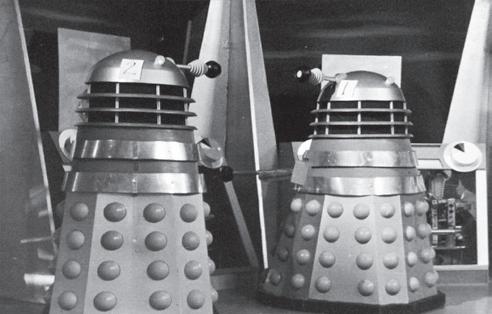
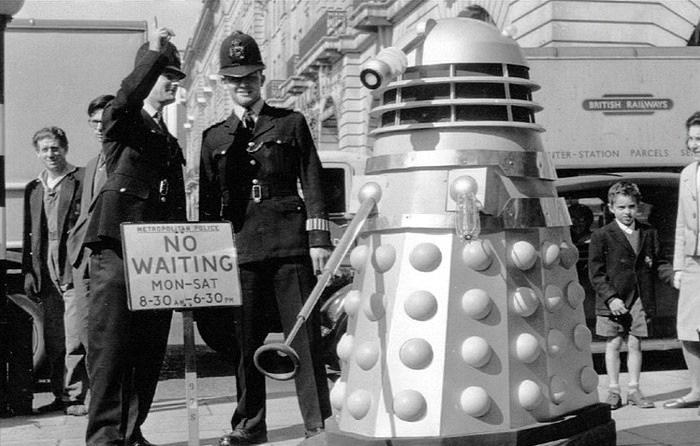

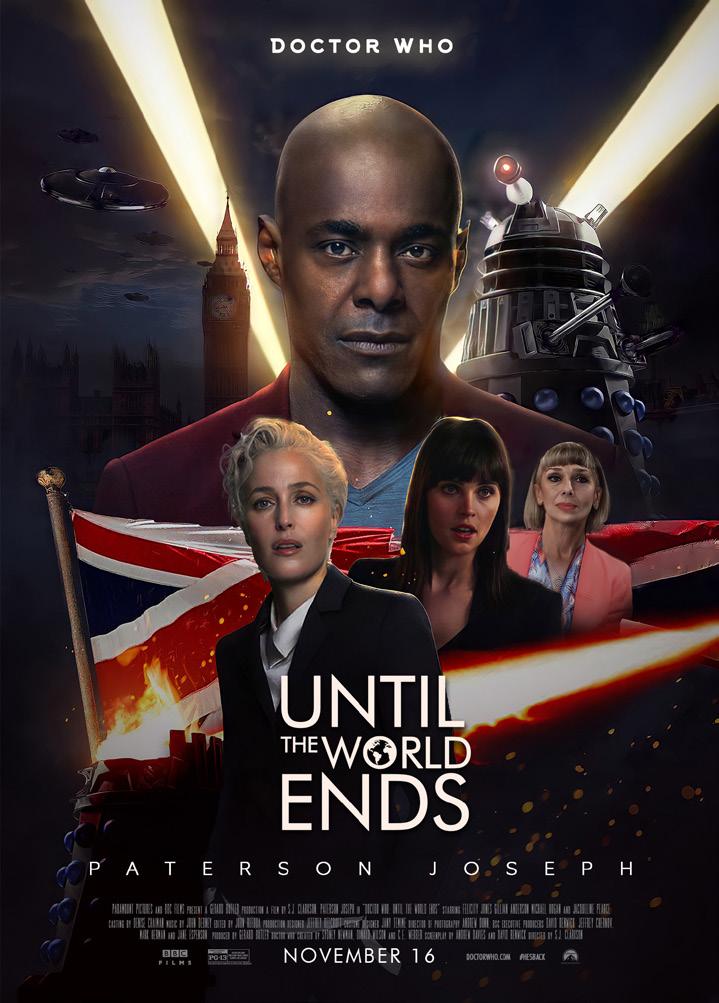
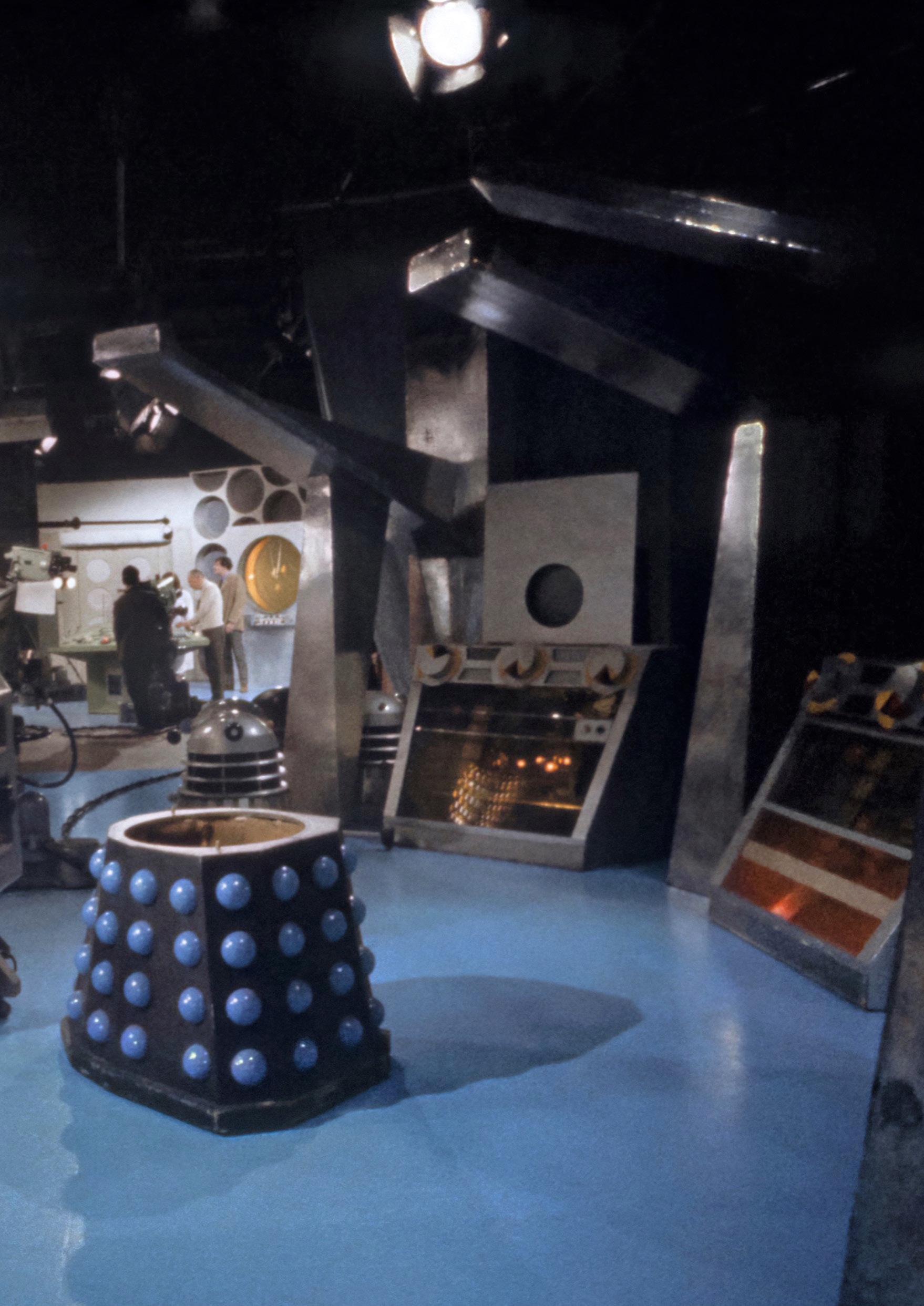
Two years, but only one season later, the Daleks’ reappeared, facing off against Adjoa Andoh’s Fifteenth Doctor, in the low-key titled ‘Comercecilla’, an episode which saw scavenger Daleks hiding out in an outer-space shopping centre. This story was famously a massive failure, and single-handily inspired a huge change of pace for the next Dalek story.
The story in question, followed, just a season later, once again, with the Season 52 finale ‘The New Empire’, a two-part epic which had the fortune of killing off two companions. I won’t say much about this as Time Capsule feature is all about it, so go and read that.
However, due to some terrible coordination between CBS and Paramount (which we all know was, at the time, very much intentional), the next Dalek story followed just a month afterwards, with the release of the Twelfth Doctor movie ‘Doctor Who: Until the World Ends’. This story saw the Daleks return, completely unrelated to their return the month before, in an epic blockbuster film. The film follows many of the same beats, by coincidence, as ‘The New Empire’, but overall was considered to have done a better job, with a larger budget, a more popular Doctor and a style more accessible to the general audience.
The finally, in 2021, a single Dalek appeared in ‘Terror of the Daleks’, which really... wasn’t about the Daleks at all. It featured one lone Dalek, doing the usual ‘lone very clear’ Dalek thing... but mainly it was a story about the Doctor, or rather the fake Doctor. Sixteen really hasn’t actually face the Daleks himself, until now. The Daleks have been gone for a long time, and I’d probably say, even ‘Terror of the Daleks’ is less consequential, as a Dalek story, than ‘The Sharper the Knife’ was. Luckily, while the Eleventh Doctor didn’t reallt get a second go with the Daleks, Sixteen is.
... So, excluding spinoff and foreign adaptation appearances, is where we find the Daleks in Doctor Who by the time we reach 2022. The Daleks have just launched a huge New Empire, as we saw in ‘The New Empire’... but it seems that’s not important for now, as we are returning to the Daleks’ very original Empire, as featured throughout their 1960s stories.
WIDWWA 9
The Genius of the Adrian Hodges Finales
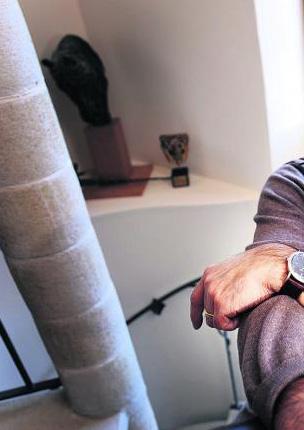 FEATURE BY Tadeusz Cisłak
FEATURE BY Tadeusz Cisłak
Throughout his run as a showrunner, I criticized Adrian Hodges a lot. But looking back, I have to grant him one thing - he is the master of season finales.
If someone asked me what was the best story of the last five seasons, I think my choice would be Her Final Stand. What starts as yet another pretty dumb plot by The Rogue suddenly turns out to be a much bigger deal, as Toymaker begins his game and all the main cast become but his pawns. This is an impressive showcase of this entity’s power, as The Doctor gets stuck in a fake world full of wild ideas and in the meantime the real world... also turns out to be fake. The Test of The Shadows still gives me goosebumps. The Rogue, who seemed to become a complete idiot in recent stories, suddenly proves to be the smartest person in the room. That twist alone would cement this episode as classic, but the story is far from done - among blossoming creativity, The Doctor and Bertie both prove their strength dismantling the simulation from the inside, and then the second greatest actor in the history of Poland shows up to reveal that this all was just the warm-up before the final challenge in which millions of realities are at stake! And this challenge is, in its nature, very simple - can Fifteen prove that she’s The Doctor?
The genius of Her Final Stand reveals itself in its ability to organise chaos. Seasons 51-53 weren’t some multilayered masterful arc about The Doctor rediscovering their identity - they were just a pack of inconsistent garbage writing by an auteur who lost moderation and other people trying to damage control that. And yet Her Final Stand makes it look like a set path. What was just a mess, suddenly becomes a tale. And this story itself is a miniature of that. The Rogue takes over in modern day Britain, Christmas on Victorian themed planet with Silurians, a mining freighter caught in the ion storm in space - it’s all connected, all one big narrative, the incohesiveness is just an illusion! Perhaps that’s what Doctor Who is about - a harmony of contradictions,
as there’s nothing this show can’t do. But it’s also about The Doctor - and this is why Part Three is so important. After all the wilderness of Andoh era, this episode brings us to safe haven by reaffirming that The Doctor is, once again, never cruel or coward - as she should be. And it’s that confirmation that lets the entire Doctor Who multiverse sleep peacefully, as this is its true foundation. One could say that after 53 seasons we should know who the Doctor is. And that’s true, but we humans tend to hardly learn our lessons and I think a reminder is more than welcome, especially after such a turbulent time. Even if you’re a Fifteen fan and think that she didn’t actually have to prove anything, I believe that you can still admire that she did the right thing in a crucial moment - after all, that’s what we like her for, right?
The Toymaker is also such a great antagonist in this... Multiple layers of this incredible character are shown here. This indeed was all just a game, while also being far more than that, and all this toying with The Doctor coming from the fact that... he genuinely admires her. Because there’s an even bigger game at play, and The Doctor is the one that can win this. Of course that The Toymaker would make sure that the game is won. This story is as much a perfect tribute to The Doctor as it’s the perfect farewell to The Toymaker, the greatest player of all, whose sheer fascination with The Doctor opened for us the door to completely new and slightly different Doctor Who worlds... Remember that next time The Bëmastra tries to seduce Brigadgeneral.
And of course there’s the whole cosmologyexpanding ending, which was, without a doubt, an intriguing setup - but was either this setup or its payoff good or bad ultimately is a completely different discussion to have.
So... yeah. Her Final Stand is a gem. I don’t know why certain people have issues with it. I was mesmerized by the unexpected brilliance of that story - little did I know that it’s but the first
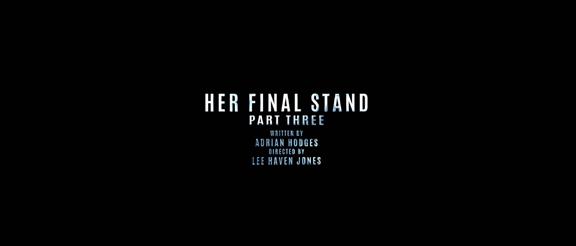
10
installment in a trilogy of priceless season finales that Hodges had in store for us.
There are several Doctor Who stories that left me collecting my jaw from the floor. The Mind Robber. Planet of the Spiders. Arc of Infinity. The Curse of Fenric. The Ties In Between Us. Doctor.
From amongst them, The Last Supper deserves a special recognition due to how completely by surprise it took me.
I have a bit warmer opinion on Season 54 than the fan consensus. And that’s because I utterly despised the state of Whoniverse at the time. Chris Carter gets paid good money for insulting my religion and turning The Keeper into High 1-C being out of his arse, Phil Ford does alien pregnancy plot out of some Disney XD live-action show in what was meant to be a quality children TV, and the hottest thing around is Hanky Panky In The TARDIS, made in Sweden. Oh, and let’s not forget the most important - aside from Her Final Stand Season 53 SUCKED BALLS (looking back, it wasn’t that bad, but I’m trying to paint you the picture). With the franchise in seemingly endless turmoil, average stories like The Screams of Terror and The Age of Discovery rose to the rank of glimmer of light, the flickering flame of hope, as it’s always a step in the right direction. Today average, tomorrow OK, perhaps in like five years Doctor Who will be able to become good again? But I wasn’t getting my hopes up - pandemic was in full spring, Hodges was still in charge and the episodes like Countdown kept happening. Furthermore, ViacomCBS report loomed on the horizon, presumably to ruin everything further with corporate meddling. It will be a long time before I’m gonna be able to say thatThe Last Supper effortlessly broke my jaw and then made me digest all venom that I spit on the floor.
What Simon Allen delivered wasn’t just a good story, but A MASTERPIECE. All it took was a relatively simple concept - what if everyone knew when they’re going to die?
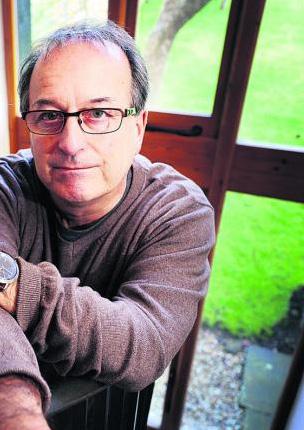
Terrifying idea. You know how in the late 2000s the “learn the date of your death” apps had their five minutes of popularity? I never wanted to try one, even though I knew they can’t possibly predict this for real, they just add average lifespan to the birthdate. Regardless, I didn’t want any date, as it would automatically get significance. Similarly to 21.12.12, when I spent the whole day making Doomsday Clock jokes while deep down being a bit scared, despite knowing full well how irrational that was. I dread death. Now matter how many philosophical
perspectives I hear on the subject of death - and I heard a lot - I still dread it, because I value life this much. Heck, look at my Discord name, it says it all. Eternal. Always existing. By its very nature not susceptible to death. In the past the name that was given was often a wish, a representation of what the namer hoped the named will become. We still do that - sub-, or sometimes even consciously. Thus, any potential date of death would become the date I dread. It’s untrue, or is it? I’d probably try and fail to make preparations, make sure to tie up important things beforehand. With a set ending, life would inevitably get partially defined by this, because it no longer would have been an ongoing, but a countdown. Don’t start anything you won’t be able to finish! And what are you even able to finish, actually? Did you account for potential delays? Hurry up, get to the core, push further whether you’re breaking or not, YOU’RE RUNNING OUT OF FREAKING TIME!
I laugh off all those sparkling life coaches with their “live every day like it’s your last” advice. Last day is the one you stop moving forward, because it takes time to find out what this move will bring. Focusing on death is the best way of wasting your life!
And this is where The Last Supper enters the picture. The Rogue wastes all the Earth’s lives by taking away the “ongoing” status. Even though not everyone is going to die in 24 hours, everyone ends up with a measured run they need to fit their life into - and this life is not very flexible afterwards. Truly terrifying perspective.
Of course, there are many angles and themes that can be explored coming off this premise - way too many for a 45 minute episode. The Last Supper chooses to take a look at the horror of impending death. It straight up kills some people, frightens others, leaves some completely apathetic and sheepishly accepting that they’re heading right towards their doom.
But one chooses to fight. Bertie Reynolds, former acclaimed companion of 15 and future worst meme of the Hodges era, makes his stunning return and right from the front he faces his biggest challenge so far. Unknowingly enlisting help of the fellow companion, he looks for a way to survive. This struggle proves both engaging and dramatic, with twists and turns as we see that preparing himself for every opportunity simply isn’t possible - there are too many ways to die. But - obviously in part thanks to Chrissie - Bertie doesn’t surrender. As the death shoves itself down his throat, he wrestles - until he

11
wins. What a perfect way to end this episode. Cliffhanger of hope. The Rogue can’t just tell us when we’re supposed to die. There’s no fate but what we make for ourselves.
But what was The Rogue’s goal in all this? This is an interesting mystery that The Last Supper sets up. If Her Final Stand taught us one new thing, it’s that The Rogue’s seemingly idiotic plans may actually have some point, because the Whoniverse is that wild. And indeed, The Rogue claims that there’s such a point, a very important one, and it connects to the events of Her Final Stand! Brilliant setup, that’s a lot to chew.
And unfortunately, No Good Deed did not manage to chew it, instead majestically choking.
Unfortunately, after Her Final Stand never again had Hodges managed to fully stick the landing with his season finale. At least one of its parts ended up severely lacking and in this case it was No Good Deed. Of course, it’s not just his fault. As we learned later, messy structure of No Good Deed was a shared result of pandemic messing with the production and Jane Espenson’s misguided attempts at restoring the franchise to its former glory. That doesn’t change the fact that No Good Deed is trash that wastes the potential of The Last Supper on the wide scale. Because this is a positive essay, I’m not going to elaborate on that.
The Last Supper is an interesting middle chapter in Hodges finale trilogy. It has two fathers - not just the showrunner, but also Simon Allen - and it wasn’t supposed to be the season finale. But all that just expands the credit that should go to Hodges. Not only did he hire a great writer and greenlight a great idea, but he also managed to turn it from ordinary episode into a wonderful season finale in critical circumstances. Would The Last Supper be that good if it wasn’t a finale - so without Bertie, without The Rogue’s setup? I doubt it, these elements brought a lot to this story. So, with all respect and deserved praise to Simon Allen, this is also a victory of Adrian Hodges, who once again managed to defy the odds and organized the chaos into a mind-blowing magnificent penultimate episode - and, unfortunately, not so great final one.
Season 55 proved itself to be a step up from the mixed quality of previous two. However, it still left me very worried for its finale. Rebirth introduced the enigmatic character of The Intendant, who backed the story’s villain, but had no issue with letting The Doctor save the day. However, Anjli Mohindra’s stage charisma overshadowed the setup of Ronan Summers’ character, leaving me and likely others in the audience more confused than intrigued about his role in the scheme. Furthermore, his ally was revealed to be Sam
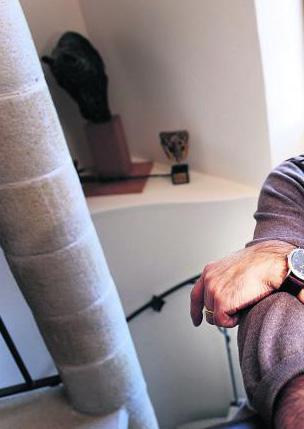
Reynolds, who turned evil - again. The giant sign with a red caption “HODGES RAN OUT OF IDEAS” wouldn’t be more apparent red flag than this. And to add to worries, returning Bertie Reynolds suddenly became morally dubious, emotionally unstable and very upset with The Doctor not being an emo black lady anymo- (bursts out laughing) ...sorry, I still can’t take this plotline seriously. So despite intriguing twists of later episodes, like The Doctor being replaced with a golem, I approached Journey into the Unknown (appropriate title) with caution.
The first part of the story seemed to prove me right. Both members of Reynolds family got written as emo dumbarses, The Paradox Project seemed to be but another generic evil plan to change reality (between TNR and S53-4, it seemed like reality changes every Thursday...) even after I watched To Win Them All (I somehow missed the initial broadcast and only saw it after JitU Part I), and the big reveal about The Intendant was that... he’s The Doctor. Cause apparently after The Valeyard, Phaedra, 15th shenanigans and countless fanfictions about insane future incarnations we needed another Evil Doctor. Despite the blank space setting and The Rogue’s part being quite enjoyable, I left Part I dissatisfied and with very low expectations for Part II.
One would think that after HFS and The Last Supper I have learned my lesson - never underestimate Adrian Hodges - but no, he had to spell this out for me again. And spell this out he did. Then again, I’m not sure if anything could have made me ready for Part 2.
Part 2 begins with informing us that the entire multiverse has been destroyed - please come to the window on the left to receive your free copy of Half-Life 3. In its place the story decides to drop a lot of awesome stuff - Lungbarrow somewhere on the sea of absolutely nothing, and inside The Intendant talks with The Other who this time channels the best incarnation of The Doctor! The hype is real. The TARDIS crew is then brought to the mix, exploring this wonderful setting which takes a good chunk of the story and I’m definitely not gonna complain about that, because I love every second of it! I like stories open to pure creativity like The Mind Robber, and it’s great to see a season finale harkening back to their traditions. This situation turns out to be the making of our favourite Old Girl, who created a plot-convenient paradox that sent those present at her explosion to a place responsible for this whole thing even being possible. It seems like The Intendant, as punishment for his crime against the multiverse, was sentenced to eternal house arrest, and his spreading of death lead to him being robbed of the right to die. That’s already
12
poetic, but it gets deeper - the multiverse and TARDIS actively fight their own destruction by ensuring that the person that can undo it gets opportunity to do so. Resistance to evil and possibility of resocializing evil, coming from multiverse’s fundamentally good nature. I love it.
As everyone gets together, the time comes to reveal the secrets of The Intendant... And, what I haven’t expected in the slightest, it blew my mind.
Oh, I’m not talking about him being a distant loomscendant of The Doctor. That’s nothing special. Valeyard was loomed, every Time Lord we saw was loomed, throw a stone and you hit the Loom. Like I said after JitU part 1, it doesn’t matter if it’s future, past, parallel or artificially created incarnation of The Doctor, Evil Doctor is the Evil Doctor.
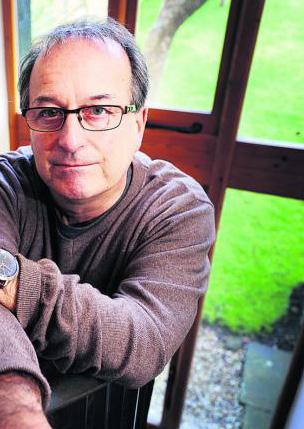
Except that The Intendant is not, in fact, the Evil Doctor.
He’s The Doctor who gave up.
Forget God Keeper, Vajahnari and Ascension Beta - The Restoration is the most ambitious addition to the Doctor Who lore in recent years. The Doctor is a character of impressive physical endurance - he saw many of his companions die, his planet getting poisoned, innocent people being sacrificed in his name, he even saw Androzani Minor, possibly the most rotten place in the universe that puked on everything he believed in. And yet he still keeps going, helping wherever and whenever he stumbles, in hope that the universe can be better.
The Restoration scared his future “self” so much that he decided the universe would be better off not existing at all.
This is HUGE. An event so terrible that absolute annihilation is a preferable option. So frightening that The Intendant wants to commit extended suicide. This setup is going to be very hard to pay off, but the sheer magnitude of it already astonishes me. And it already puts in place some huge philosophical dilemmas.
Some past stories, like The Waters of Mars or The Web of Time, toyed with the idea of whether The Doctor has a breaking point. Journey into the Unknown closed this discussion - yes, The Doctor has a breaking point. The right question to ask iswhat are we going to do if he ever gets pushed past it? Do we have The Doctor protocols? If The Doctor suddenly decides to end everything, what can we rely upon? So far we only had “brilliant” ideas of The Rogue and other shining minds of the last Gallifreyan generation that to fight the Doctor, we need another
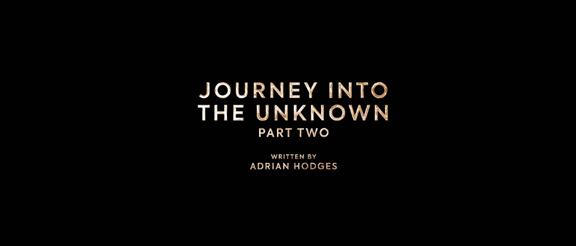
Doctor. Which works as long as he doesn’t grab Omega Machine or something... Perhaps it’s time to seriously consider our options. Another major question to consider is - what if The Intendant is right? Do we seriously assume that he made the decision he made lightly? The Other claims that The Intendant can’t just end the world because he doesn’t agree with how people leave. This statement may seem level-headed and universally true at first, but we don’t know what Intendant had seen. Let’s say that the whole universe became The Daleks who continuously purge each other to create the purest creature of hatred. This is already a scenario so morally complex that it got its own iconic moment in the show - but it’s not the darkest timeline yet. How about universe where cannibalism became a social norm? Or sadism? Or perhaps the irradiated world where every living creature slowly decays and the most precious good is drug that allows you to not feel pain at least for a short time?
Use your imagination - I’m sure that you too can picture a world so horrible that you’d rather die than live in it. And what Intendant went through can very well go beyond that. Also note that according to his knowledge, this turn of events is inevitable. Of course, what I described here is a simplified version of multilayered philosophical debacle, but you get my point - it’s really not as black and white as The Other would want it to be.
Anyway, the Intendant isn’t actually trapped for good - the power over what’s left of universe has been transferred to him, which probably has something to do with the mechanics of Paradox Project. He can rebuild the world, perhaps better than it ever was before... Or end it once and for all, including himself. But - and this is my favourite part - he can only do it together with The Other and The Doctor.
In Naruto Shippuden, there was a powerful technique of Izanami, which trapped its victim’s mind in a loop of endlessly repeating events. There was only one way to break out of it - come to terms with one’s true self. This whole episode is Intendant’s very own Izanami. After he destroyed the whole world over his grief and pain, the TARDIS asks him - is this what you really want? Only in accordance with himself - represented here by his past selves - can The Intendant emerge from this. And that’s quite a challenge - what is a “true self”? Emotions? Feelings? Primal instincts? Genetics? “Purpose and destiny”, courtesy of The Rogue? Is that really all we are? I saw many simplifications of this concept, and Hodges
13
avoided that pitfall. Who we are is a complex matter, because we are complex and multidimensional. This episode shows that by using classic symbol - a trinity. One essence in three persons. Ok, I’ll spare you the very obvious Christian reading of this part. Still, the Doctor’s whole life - past, present and future - needs to be taken into account when defining his actual identity.
The negotiations are hard, as The Intendant is full of anger, sorrow and pride, forcing him into belief that he’s in the right here and all should just end. How do The Other and The Doctor respond to this?
With kindness.
Boy, I love this episode.
Is kindness the solution to everything? No. Is kindness The Doctor’s true self? More like part of it. Will kindness by itself fix The Restoration? Unlikely. But kindness is the start. A good first step to more advanced solutions and a perfect tool to fight despair, anger and, most importantly, fear. At the end, The Intendant was ultimately full of fear. Fear of his life, The Restoration, his past selves. What the one the fears needs is a reassurance. A warm hug, someone by his side and a promise that too often we dismiss as a lie, not realising that deep inside it there might be a certain truth that we should uncover and understand: “everything’s gonna be OK”.
What is that truth? I’m not sure, honestly. Perhaps I’ll write another essay about it one day - or perhaps Hodges will return to teach us that.
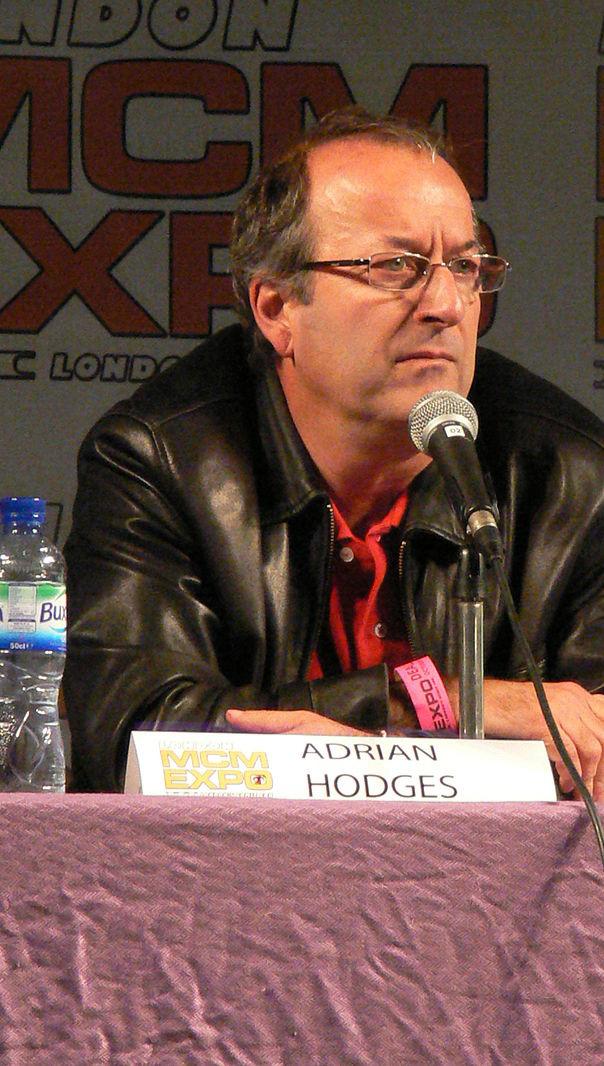
His finales taught us a lot, after all. He taught us the hidden genius of The Rogue and universal importance of The Doctor. The existential dread and the ways to fight it. The harmony of chaos and the imbalance of order. And finally, the complexity and magnitude of the challenge that is finding one’s true identity, without cruelty or cowardice, but with kindness. His final class - the Restoration - will be lectured by someone else, and it remains to be seen how well this task will be performed or if the lesson was worth taking in the first place. But regardless of that, Adrian Hodges has already cemented his legacy in Doctor Who history - and its brightest point are three masterful season finales that, if you ask me, deserve the spot amongst the all-time classics. Thank you, Mr Hodges, for adding your trilogy to our eternal journey through time and space. It truly was an unforgettable ride.
 WIDWWA
WIDWWA
14
From the Archives
The Doctor Who Annual Returns

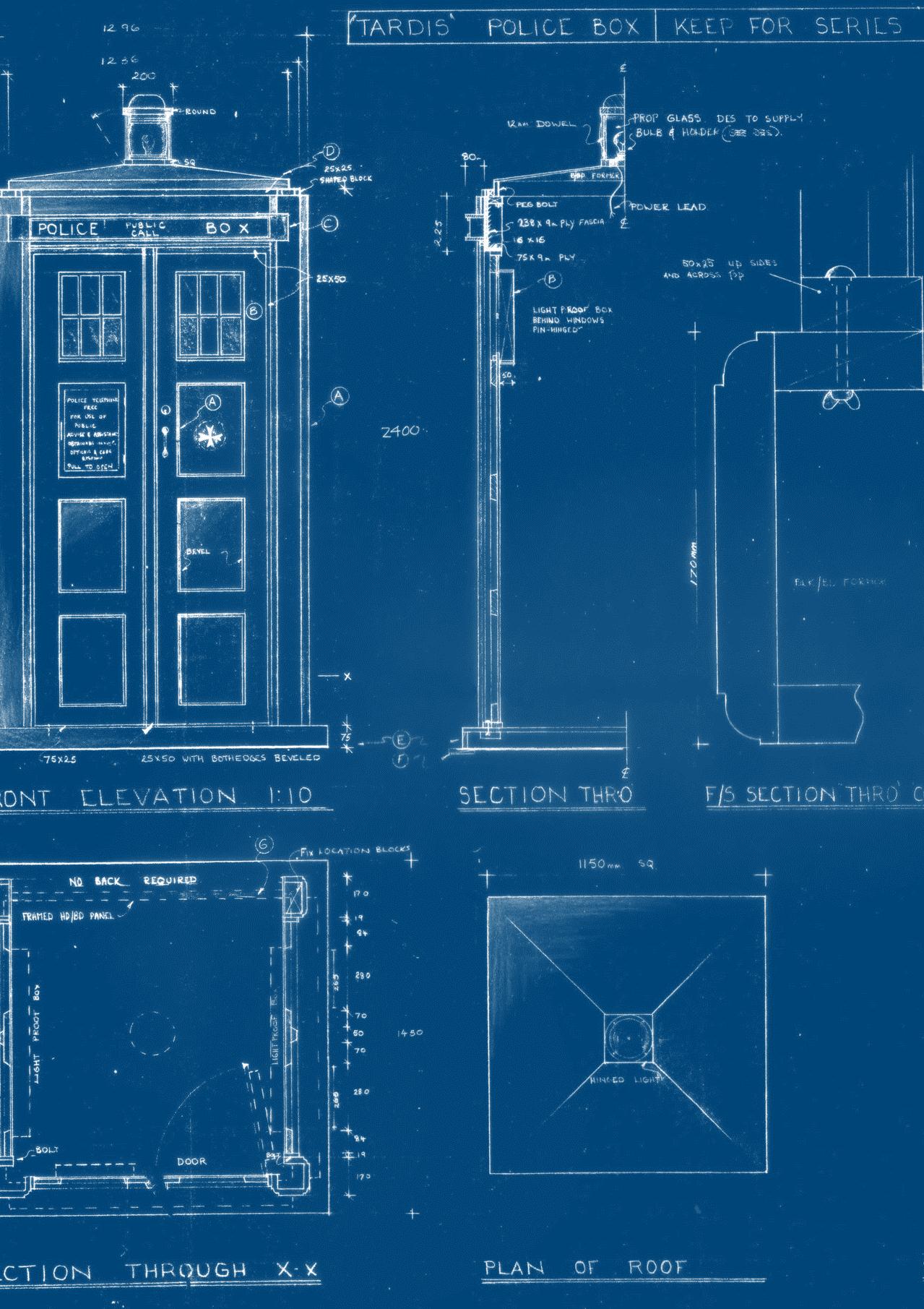 Doctor Who’s traditional annual, a publication once-a-year since 1965, seized publishing after the 1985 edition. For the 30th Anniversary, the Annual returned,
Doctor Who’s traditional annual, a publication once-a-year since 1965, seized publishing after the 1985 edition. For the 30th Anniversary, the Annual returned,
and
there it remained on Doctor Who fans’
shelves
to the
present day...
The End Board CONTINUES
BY
Endboards, ahoy! Yes, it’s time for another look at the history of endboards used at the end credits for Doctor Who in this timeline. Previously, we looked at the Season 27-34 set, and now it’s time to look at the next lot from Seasons 35-43. An interesting range to look at, considering how dramatically Doctor Who’s landscape changed during this time. Let’s take a look.

Season 35 saw the beginning of many changes: the Paramount co-production, the move to production in Cardiff, and more. BBC Wales now produced for the show, as well as Paramount Television, although they only co-owned, funded and distributed the show, and didn’t have any major creative involvement, so the BBC was still essentially producing the show almost entirely themselves, with more help financial-wise. The endboard was quite the departure from the previous seasons as well; perhaps the biggest change ever. The Doctor Who logo was now dropped from the credits completely after over a decade, and the BBC Wales logo was now in sight. Paramount’s involvement saw the endboard now be credited as ‘Paramount and BBC Wales co-production’. Retaining Gill Sans in the copyright line, the Paramount logo is included at the top with Gill Sans also covering the production details, like last season. The endboard was now in 14:9; matching the aspect ratio that Season 35 was broadcast in.




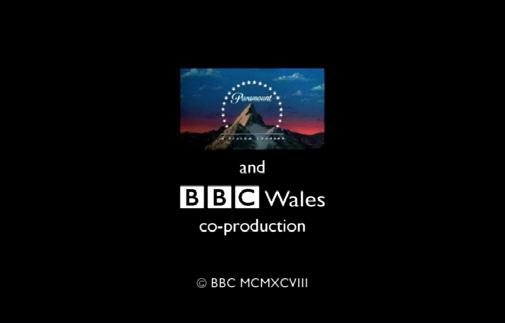
For Season 36, the show was now produced in 16:9 widescreen, and hence saw little change to the endboard. The production details were now made larger to fit widescreen, and the copyright line was unchanged. The same applied for Season 37.
With new titles introduced alongside Richard E. Grant’s Doctor for Season 38 , further changes were made to the endboard, matching the style of Leftover which it introduced for Series 1. The Doctor Who website, www.bbc.co.uk/ doctorwho, and the BBC Online logo, were now moved here from the main credits, as it previously did for the past three seasons, as the BBC stopped this practice earlier in the year. The ‘Paramount and BBC Wales co-production’ section was made smaller, to fit these in, with the copyright line untouched. This version, however, would be short lived, lasting just seven episodes. Between the broadcasts of ‘Invaders from Mars, Part Two’, and ‘State of Change, Part One’, on 7 November 2001, the BBC rebranded its online and interactive services under one name, BBCi. This resulted in the BBCi logo replacing BBC Online on the endboard, which otherwise remained the same and continued up to the end of the season.

FEATURE
16
1998 2001 2001 SUBTLE CHANGES IN THE LATE 90 s
In 2002, Paramount celebrated its 90th anniversary, and for the occasion, decided to update its logo, showing off the anniversary by stating it within their updated image. This was first incorporated on the endboard for Leftover Series 2, and was also used for Season 39 of Doctor
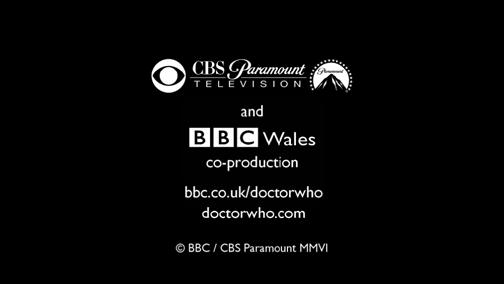
Here’s a look at Leftover’s endboard style from Series 1-3, which Doctor Who also used from Seasons 38-40. It shows the layout’s versatility and similarities the two shows shared at the time.

Who, where except for Paramount’s updated logo, remained unchanged from the latter half of the previous season.
Another tweak to the endboard was made for Season 40. The only change from before, was that the 90th anniversary text from the recently updated Paramount logo was dropped. However, as this season included the return of previous Doctors, there was a second version used for four episodes in this season. These were ‘Creatures of Beauty’, and three-part serial, ‘The Horrors of War’ which starred Peter Davison and Colin Baker respectively. In the end credits for their tenures on Who, the credits ended on plain white with the endboard details appearing just beforehand. To go along with this, the endboards for these episodes saw a white backgorund with the BBCi logo and Gill Sans text in black, to help fit the credits style, but the other nine episodes used the incumbent style as before.
For Season 41, putting the drastic format change aside, and the debut of Anthony Head’s Doctor, the endboard remained relatively similar to the last few seasons, but with minor
changes. The BBCi logo was dropped and the Doctor Who website was now by itself. Furthermore, the ‘www.’ section of the website was dropped, as in May 2004, the BBC rebranded BBCi online to ‘bbc. co.uk’, and this again affected most programmes which used their websites in their endboards. The website from now on was shown as ‘bbc.co.uk/ doctorwho’. This style was used for Seasons 41 and 42.
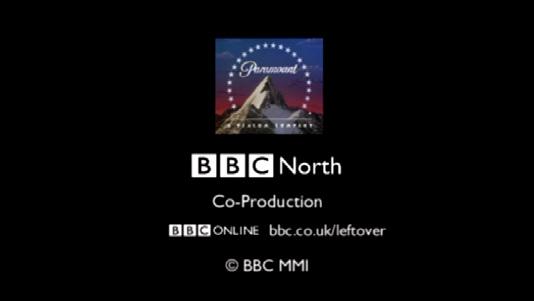
Changes were afoot for Season 43, as in January 2006, during the broadcast of mini-series ‘Rebel Zero’, the Viacom split, and the merger of CBS Broadcast International and Paramount International Television saw the formation of CBS Paramount Television, resulting in the biggest change of the endboard since Season 35. Obviously, CBS Paramount Television’s logo replaced Paramount’s, and now read as a rather clunky ‘CBS Paramount Television and BBC Wales coproduction’ with the Doctor Who website beneath, and copyright line at the bottom. However, the Viacom split did allow CBS Paramount to be credited alongside the BBC, with the copyright line now reading: “BBC/CBS Paramount MMVI”.
Things are spicing up now, as part three looks at further changes between Seasons 44-50. HD debuts, CBS takes more control, BBC Wales changes their name and logo twice and another new era including a change in location. Who knew endboards could be that exciting? All to come next time!



WIDWWA
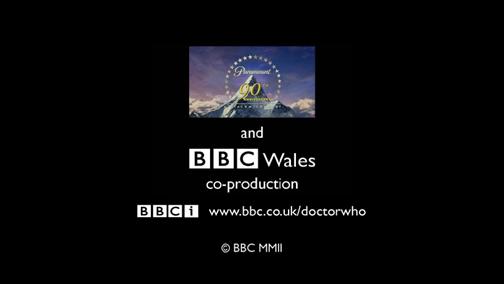
17
2002 2003 2003 2004 2006
Sandra Armstrong
I was genuinely surprised when I debuted the character of Sandra Armstrong, with the Season 39 video in March 2017, that she instantly had so many fans. Sandra was the first big original WIDWWA hit, and yes, it did take me surprise, not because I didn’t like Sandra... because I do, a lot... but because I hadn’t quite had a reception to any character quite like the one from Sandra. Naturally, I had to then go and give her just 3 more stories, following Season 39, and I had to go and kill her... twice. Givin’ the fans what they want!
In all seriousness, Sandra Armstrong, is popular, not just in our community, but she also would’ve been in universe. Compared to previous companions, Sandra was a breath of fresh air. While not the first alien companion, she was the first very obviously alien ALIEN companion, with a complete face of prosthetics, that caused Sandra’s original actress to depart before filming began.

Yes, you read that right, Anna Hope was not the original Sandra Armstrong. Much like the April Walker scandal in 1973, the part of Sandra Armstrong was originally given to a different actress, who was formally contracted for the enterity of Season 39. That actress was Caroline Quentin, who Renwick later cast as Barbara Deaconsfield in the Paterson Joseph movies.
Season 39 was already going through a bit of production chaos, when all this was going down, with three people with three different agendas trying to run the series. The fact that Caroline Quentin, the actress who Renwick had tried to cast as Sammy Thompson (but was overruled by the beeb), reacted badly to the intended prosthetics, prompted the directive from above, to replace the actress. With a new Sandra needed immediately, Andy Pryor quickly set about recalling some of the women who had auditioned for Sandra, several months earlier. Only two were immediately available for the filming dates, and instead of a traditional audition (as they
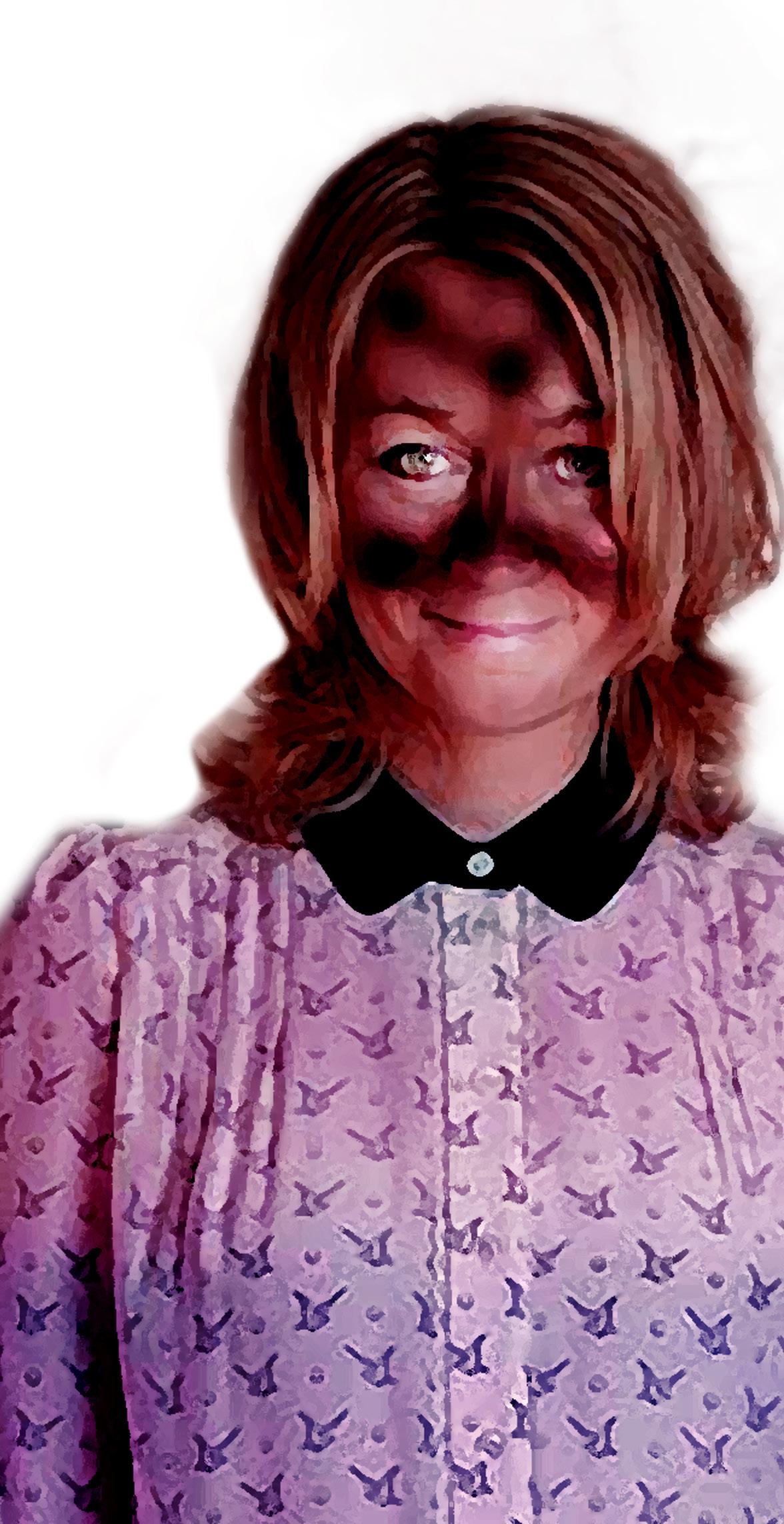
18 The Companion Factor Cmdr.
Fact File Full Name Sandra Jaina Armstrong Born in Bellons, 3417 Occupation Millitary Commander Parents Duncan & Hame Armstrong Travelled with Tenth Doctor Met the Doctor & left the Doctor on Exotract 42, 12 November 3445 Companion for 15 ‘Doctor Who’ Episodes Portrayed by Anna Hope
had already had several, months before), producer, Bill Shapter, decided to give each one a make-up test, and whoever was the most comfortable and most natural in the makeup, would win the part. Anna Hope was the actress who
As a character, Sandra’s story is one of tragedy. She grew up a half-human abnormity, ridiculed by not just her peers, but also herself. Sandra’s first appearance, in ‘No Sky in Space’, continually shows off Sandra’s sheer self-hatred for her human side, for the side that was her father... someone she knows abandoned her and her mother before she was even born. In reality, as we later learn in Cold Front, her father was imprisoned by the Poplne (Bellons’ oldest enemy and former occupier) before, several months later, he scarified his life, to spark a Bellonsion rebellion against them. Sandra, unaware of this, sees her father, and thus her human side, as utterly detestable. This prejudice against humanity runs throughout Sandra’s earlier stories, and it’s only when the Doctor keeps taking her back to Earth, that she begins to move past her prejudice. Sadly, Sandra never learnt of her father’s heroic actions, but she did come to accept that things may not have been as simple as she liked to tell herself. The behind-the-scenes reason, for Sandra never learning about this, is because the story
hadn’t been invented yet, as it was only ten years later, for Cold Front, that the story behind Sandra’s father leaving her was written. This sadly does rob Sandra of what could’ve been a very fitting end to her character arc, but alas, it was not to be.

After a strong Season 39, which developed Sandra immensely, taking her on numerous characterbased adventures, from meeting her famous ancestor and changing history, to being stranded in multiple parallel universes, all on her own... Sandra’s final few adventures in the TARDIS, were a bit of an anti-climax. Due to the format of Season 40, and the Movie, and everything, Sandra found herself with just 2 more television stories, and the movie. ‘The Curse of the Tower’ gave Sandra a fair bit to do, but ‘The Other’ side-lined her, largely based around the Doctor and the characters on Gallifrey, and then the Movie... apart from the ending, did almost nothing with Sandra, at all.
We should talk about the ending though, as one of Sandra’s most famous qualities, is her death. In one of the darkest Doctor Who moments, the Doctor returns Sandra to the exploding Exotract 42, from ‘No Sky in Space’, and lets her die. Then, three years later, when the Doctor gets the opportunity to save Sandra, something he’d been feeling (quite rightly) guilty about for some time, he decides to return her, again, to which she dies, even more horribly this time... but the two got an emotional, and longer, farewell... so it was worth it, I guess.
Due to Sandra’s enormous legacy, writers haven’t quite left well alone, with relatives of hers seemingly popping up all the time. Is this the last we’ve seen of Sandra, or the Armstrongs?... Probably.
“TERMINATE LOG ENTRY –Commander Sandra Armstrong, 12th November 3445.”

19
WIDWWA
LOGO
Continuing our look at the WIDWWA logos
2003-13
DOCTOR
2003 marked the 40th Anniversary of Doctor Who, and one of the most significant years for the programme since its inception. Things were changing behind the scenes, with David Renwick bowing out, and new American producer, Ira Steven Behr, coming in. Paramount Television co-production agreement had, not only been renewed, but made permanent, with the company buying an almost 50% stake in ‘Doctor Who’ itself. Additionally, to celebrate the 40th Anniversary, Paramount Pictures were releasing a major motion picture, which would launch Doctor Who into a new era, unparalleled to any scale the brand had received before. And obviously... all of this meant, beginning with the release of this movie, Doctor Who would receive a brand-new logo.
The logo, officially revealed in September 2003 (during the broadcast of Season 40) via BBCi, was commissioned by David M. Thompson, for the Movie. It was decided that the 1998 logo probably wasn’t the best to brand the movie with, primarily for the reason that the logo was associated, in the public’s mind, with the TV show, and the TV show was still airing in the run-up to the movie. The thinking was, if they released posters for the movie, with the 1998 logo on it – and the film had no subtitle – it would just confuse audiences. So, the decision was made to build up the visual brand, for the Movie, from the ground up. It hadn’t been considered, at this point, that the logo would be used by the television show for Season 41 onwards, as it was just intended for the Movie, and any future sequel.
The logo itself was designed in-house by Paramount

Pictures during the production of the Movie. It’s design story was most reminiscent of Leftover’s, as similarly, it was kind of just thrown together, rather than being actively “designed”. In fact, the logo was essentially just a very typical stock logo, used by blockbusters and science fiction of the time, with Doctor Who edited on it. In the same proceeding ten years, similar logos adorned ‘Lethal Weapon’, ‘Babylon 5’, ‘Tomorrow Never Dies’, ‘The World is Not Enough’, ‘Die Another Day’, ‘Star Trek: Generations’ through ‘Star Trek: Nemesis’... and even the logo of NASA. The font, in question, was called Serpentine, and it was used everywhere... so it didn’t take much for someone putting a logo together for the film, just to take a very common look and style “off-the-shelf”.
After the logo’s initial reveal in September 2003, it would take a while for it to begin to overtake the previous one in all official capacities. The main reason for this was due to the fact that Season 40 was still on air, and everything relating to Season 40 used the 1998 logo. This meant that between September and December 2003, only things directly related to the Movie, itself, used the 2003 logo, and everything else used the 1998 logo. The only exception was Doctor Who Magazine, which moved to the 2003 logo in November, as it’s permeant masthead logo. From January, after the decision had been made, by Ira Steven Behr, to stick with the 2003 logo as the main brand logo, going forward, more things began to move over to the new logo.

-POLIS
20
It took the first six months of 2004, or so, but eventually pretty much everything became branded with the logo that would stick there for the next decade. The final piece of merchandise released with the 1998 logo was in May 2004, with the release of the ‘Spare Parts’ novelisation, everything else until 2014, used the 2003 logo (or the 2007 updated version).

Speaking of the 2007 updated version, in 2007, the logo was subtly updated. It had now been around four years’ since the logo’s introduction, and the
continued upon the 2010 release of ‘Doctor Who: Vengeance’, however, the Doctor Who logo was changed to the 2007 variation, with the “Vengeance” text, displaying in the same style as the previous film. The final two films, ‘Doctor Who: Endgame’ and ‘Doctor Who: Genesis’, followed the same style.
The logo only saw one more official return, and that was (very briefly) on the opening titles of ‘Doctor Who: Until the World Ends’, before it quickly morphed into the 2014 logo. This was done, quite obviously, as an allusion to the fact this logo
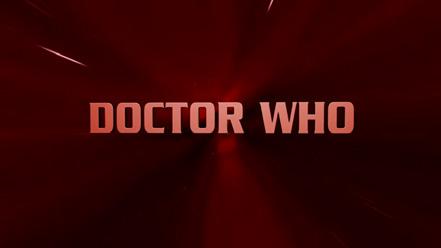
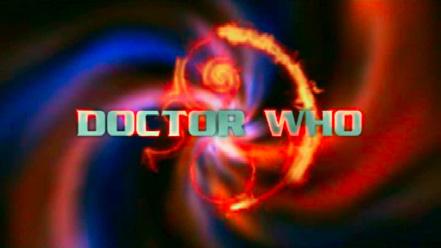
DOCTOR
merchandise licensees had been expressing concerns about the proportions of the logo for some time now. Their main issue was that due to the fact it was on a single line, and took up very little horizontal space, it looked awkward and timid on vertical pieces of merchandise, such as book covers, comics, or DVDs. The solution, Ira Steven Behr, found was, instead of to design a new logo (which he was reluctant to do, as he wanted to keep the films and the television series consistent), to alter the 2003 logo to make it ever so slighter bolder and then a little bit taller, to make it work better on these products. The change, while very beneficial, was so subtle that most people failed to notice it, and often the 2003 and 2007 logos got jumbled in not just many fan created things but also many officially licensed products.
Speaking of the movies, this logo accompanied five of them. The first, we’ve spoken about already, but was just the 2003 version of the logo on its own, however, from then on things started following a different look. ‘Doctor Who: Revelation’ still employed the 2003 variation, but below, it used the font ‘SF Movie Poster’ to display the title “Revelation” in a long and thin style. This look was
There’s a reason that the controversial 2020 ViacomCBS report suggested the 2003 logo as one of four possible logos to become the unified brand logo. That reason isn’t necessarily because it’s the best designed logo, or the best-looking logo, or the most functional logo, but because it was the right logo at the right time and saw ‘Doctor Who’ through one of its most high-profile eras, and lasted for 10 years, more than any other logo. If the general public had to think of one logo for the franchise, it’d likely be this. However, for the reasons of it not actually being the best-looking or functional logo, it wasn’t chosen.
The true reason it lasted so long was, really, due to one factor... Ira Steven Behr. It was his logo and he kept it for his era overseeing the show. He only let it be replaced, after he’d decided that he’d be departing. Sure, he did a season with the 2014 logo, but this was always a transitional season from Behr to Moore. I think the logo, then, actually sums up the Ira Steven Behr era the best... it wasn’t the best designed or best-looking, it wasn’t the most functional and it wasn’t the most uniquely Doctor Who, but it’s the one that stuck in the public’s imagination and was enormously successful.
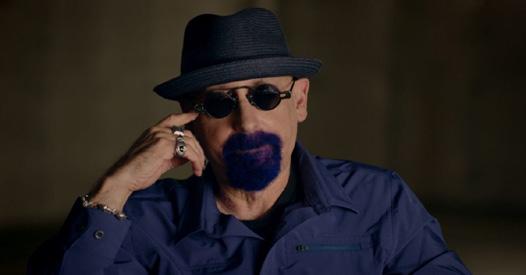 accompanied Paterson Joseph’s original era as the Doctor.
accompanied Paterson Joseph’s original era as the Doctor.
WIDWWA 21
WHO
Time Capsule
THE NEW EMPIRE
The New Empire is a story saddled in the middle of a rough era for Doctor Who history. As previously talked about, multiple times, this was the height of CBS and Paramount’s rivalry, and things weren’t going to well. We’d also just had Ronald D. Moore’s firing, and Jane Espenson had been stepping in for him for most of Season 52. The New Empire was that season’s finale, and it had a big task at hand. The previous Dalek story, Comerecilla, had been an outright failure, and for the first time ever, Doctor Who had to literally compete with itself, as a big blockbuster Doctor Who film, with the main enemies being the Daleks, came out a month after this episodes’ broadcaster... with promotion for that movie, completely overshadowing the New Empire.
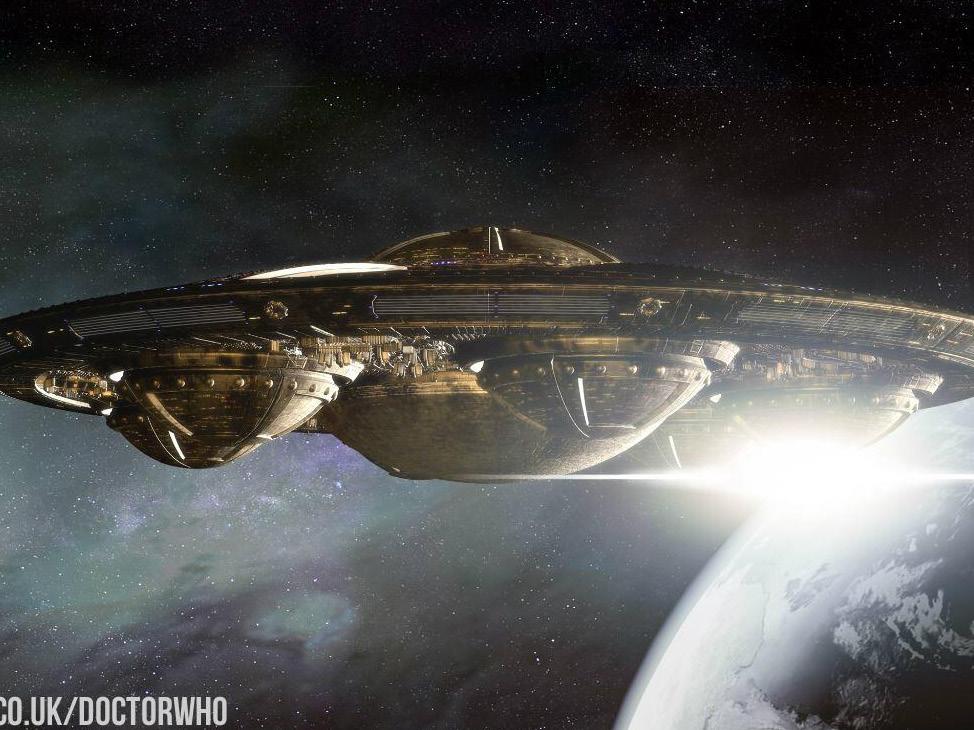

As well as being a Dalek story, the New Empire finds itself also given the task of being a Master story... and in the first part, it’s really just a Master story with Daleks in it... however, things do change as the story goes on.
Ever since Panopticon decided to Vexterminate the Daleks, the Daleks had only been coming back to Doctor Who in small sects of scavengers who survived ascension. There was always the possibility of doing a story featuring ascended Vex Daleks, however, Moore & Espenson were always weary of this, as they didn’t really want to bring back the Vex
in any proper antagonist form so soon. When it came to , in 2018, needing a proper big blockbuster Dalek story, the decision had to be made to revive the Dalek Empire, through all sorts of means of convoluted “one Dalek survived” and then “time travel” etc etc, so that our huge Dalek Empire existed for the Doctor to go up against.
‘The New Empire, Part Two’ is the part of this story that is the most remembered. It’s where the Doctor and her companions actually face off against the Daleks, properly, and it’s where the most famous element of this story happens. It wasn’t a requirement for Sally, Annie & Pete to leave the TARDIS at the end of Season 52, but, unsure of who would be taking over as Showrunner, Espenson decided it was best to give them a clean slate. Daniel Adegboyega had requested to die, mainly due to the length of time he had been on the show, which in his opinion meant his character deserved a big dramatic death. However, Espenson, was more concerned with killing Sally, as she desperately wanted the end the season on a scene, she had imagined, between the Doctor & Annie, together, without saying many words, at the funeral and then parting, for good. So, Espenson decided to do both. The Daleks would kill Pete and then the Master would kill Sally.
Part Two’s cliffhanger resolution is one of this era’s
Starring Adjoa Andoh, Daniel Adegboyega, Shelley King & Jane Wymark
22
Written by Jane Espenson and Directed by Rachel Talalay First Broadcast on 30 September 2018-7 October 2018
cheapest. Part One sets up that the Master has sold the Doctor to the Daleks, and the Part Two sees the Master rescuing the Doctor because he was trying to find out who his clients were. Once again here, as scene many times, the Doctor and the Master are forced to enter an alliance of convenience... however, the Master still chose to save the Doctor, and it’s never quite explained why.
However, most of the run time, is taken up by something we’ve rarely ever actually scene in Doctor Who... the Daleks invading Earth. Sure we’ve seen them having invaded or invading other planets, or trying some sort of scheme to invade, but here we get about 30 solid minutes of blockbuster action where the Daleks invade the planet Earth.
What then ensued by the Doctor and the Master essentially giving up hope of beating the Daleks conventionally, so they decide to go back in time, concurrent with the invasion scenes, and try to stop the Daleks every gaining a new empire, which takes up quite a bit of the running time, when you consider that, it doesn’t actually work.
Anyway, one of the crux’s of the story, thus far, was the fact that the Daleks wanted the Doctor’s DNA to help stabilise their DNA or something of the sort... This is mostly ignored until Sally comes up with the point that if the Daleks’ DNA is unstable then they can use that to their advantage, which somehow, the Doctor, nor the Master, hadn’t thought of. Anyway, the plan works, and they kill all the Daleks, on Earth, using the weakness in their DNA, but the Supreme Dalek survives, because it doesn’t have this weakness... so the Doctor goes alone to the Dalek ship to kill it. This is framed as being undoctorish and the last remnant of the Emo Fifteen character, from Season 51, by Espenson. However, what happens next wasn’t entirely the Doctor’s choice, and perhaps makes the Doctor, herself, look even worse.

Because, you see, while the Doctor was up on the Dalek ship, the Master decided to go and kill Sally... because reasons. This led Pete to hijack the TARDIS, and switch places with the Doctor, so that he could blow up the Dalek ship, sacrificing his life. What’s dubious is the fact that the Doctor allows this to happen. What’s more dubious is that Pete comes aboard the Dalek ship, tells the Doctor that Sally
Robert’s Thoughts
a WIDWWA fan’s view on this story...
To put it bluntly I love The New Empire. I love how Jason Isaac’s Master was used, I love the Daleks being an actual big threat for a long while on television, I love the small and subtle crossover with The Elysium. Pete’s death was handled perfectly with the Dalek tricking him into blowing up the ship. And I love that it completes Season 52’s arc with
the Doctor losing her edge she had when she finished regenerating into her current incarnation. I do have one problem with The New Empire. And that is with Sally’s death. I feel it was completely unnecessary. Especially since they could have lined up Sally and Annie to return to their normal lives, which is what they wanted to do. Apart from that, it was a completely great set of episodes.
is dead, and he’s basically given up, and then the Doctor allows this... despite her knowing that she’s going to lose another companion now. The scene tries to frame this as Pete, not knowing until the last second, that he is going to die, but even before that point, he had likely assumed that he had about a 70% chance of dying.
This story tries to wrap up the Doctor’s on-running redemption arc, but all it seems to have done is dig it up again, after half a season, and then make the Doctor look worse. Yeah, we get the scene of her being really guilty at the funeral, but it’s not until we get a character reset in Season 53, that things actually begin to change with her. The Fifteen who scarified herself in ‘Her Final Stand’, surely wouldn’t have allowed Pete to do what he did. Whether this is bad writing from Espenson, or just a really complex and (genius?) character arc, is up to the viewer to decide... however, most viewers, by this point, in-universe, had honestly, just got past the point of caring... which perhaps sums up the entire thing.
‘The New Empire’ as a story doesn’t quite hit the mark. The Master has really conflicting and undefined motives, the Daleks have this strange agenda to kidnap the Doctor through the underground interstellar slave trade, and then get her DNA and then invade Earth or something... we have a pointless detour to change history, which fails, and we get two companion deaths, which weren’t actually needed at all. The work on the Doctor’s character, by the rest of the season, is undermined here, pushing the Doctor in some really odd un-Doctorish moral territory.
The story which also, as mentioned before, faced very stiff competition, against ‘Doctor Who: Until the Worlds End’, a Doctor Who Dalek story, which was just... much better. Sometimes it’s easier to be a fun action movie, than whatever ‘The New Empire’ was trying to be. Also, you wait 55 years for the Daleks to properly invade Earth on-screen, and then two invasions come along at once... and the one with Paterson Joseph was much better. WIDWWA
Release Details
PRINT The New Empire by Nicholas Briggs 20 February 2020 DVD Season 52: Part Two 29 October 2018 The Complete Season 52 17 December 2018 BLU-RAY Season 52: Part Two 29 October 2018 The Complete Season 52 17 December 2018 23
Reviews THE PRINTER
Reviews by Tadeusz Cisłak
The following are reviews for episodes in the ‘What if Doctor Who Wasn’t Axed?’ universe from March 2022. If you have not read any of these episodes, you can do so on the WIDWWA blog which is at www.widwwa.wordpress.com
Doctor Who: Adventures
Another historical about someone I’ve never heard of! Adventures really does a good job with these.
This time it even avoids the pitfall of “Doctor Who story in name only”, but it’s not as ambitious as The Patriot or Matchstalk Men. That doesn’t stop it from being a fun, simple story, which I definitely enjoyed.
The Boneless challenge The Doctor again? Count me in!
Also, please tell me that I wasn’t the only one whose first thought at “organic flicker in a typeface” line was “Soylent Green is people!”.
Doctor Who: Adventures
THE MARAUDERS
Boring.
Doctor Who: Adventures
ENEMIES OF EARTH
You can tell that this episode was rushed. The Doctor is thrown from place to place, gets handed some exposition, and then suddenly the plot is cut short. The last time we got something like this was the CJ Hemming episode – and there is a reason why it wasn’t very well received. This is not a story, this is a PowerPoint presentation.
The takeaway from this presentation is that Daleks are behind The Revoc because keep watching Adventures to find out and that The Revoc brokered a deal with The Doctor, with one of them, the reasonable Sur-Dur, being able to telepathically call The Doctor. He’s left in hands of the Daleks now.
How the heck did they stretch this to 45 minutes is anyone’s guess. Anyway, that’s all you’re going to get here. If you wanted interesting story, major character moments or engaging action – you have to wait until Season 4.
The writing team correctly concluded that having gotten a setup at the start of the season, the audience would expect some sort of payoff by its nominal end. What they failed to take into account is that this doesn’t mean they got a day off, because this payoff should be placed inside the narrative that the audience would find appealing – that’s what we call storytelling. Unfortunately, by the time they realized
24
that they need some quasi-finale as ep10, it was too late (or someone was too lazy) to write a proper story, so we got this eclectic filler (SECOND IN A ROW!) with exposition. What the heck is going on behind the scenes?! Personally, I don’t even really care that much that it was The Daleks who transmatted The Revoc. Would it change much if it was The Master? The Rani? The Cybermen? Any other of the usual suspects? It’s not really the matter of who – it’s the matter of what. What does it tell us? The key to satisfyingly pay off mystery box is, once again, a proper story – an intrigue that will make an impression on us. Obviously, we can still get that story in Season 4, while this one leaves us with vague tease. Thanks, but... I don’t need that. Give me some meat, not an appetizer, or just give nothing at all. I can wait.
But that’s just me. The audience cannot wait and some of them may actually be content with just a villain reveal. Especially if it was big and shocking, like in Those Who Lead Part I. You still need a story to sell it well. “This magic button will reveal to us who removed you from Earth... and it’s Skaro! Did you see that coming?” is not that story. You know what I would do? Take whatever you had as episode 10, KEEP IT AS EPISODE 10, add two scenes. Scene 1, by the beginning of the episode, Doctor gets a call – through a TARDIS, telepathic link or something – from his ally Sur-Dur of Revoc, who tells her that they found this piece of rock that likely was left by whoever displaced them, they’re going to track its source and they’ll let her know once they learn anything new. Scene 2, at the very end of the episode: Doctor gets an incoming video call that she opens on the console screen. Cut to Sur-Dur landing on the asteroid, drops some lines that would get very ironic a second later, cut to The Doctor recognizing in the threat and being terrified, cut back – a wide shot revealing Dalek spaceships with epic music, Daleks capture Sur-Dur and the Emperor announces from his flagship that he’s prisoner of the Daleks, Sur-Dur questions the Emperor, he drops the “remove the impurities” line and then adds “... Doctor.” Camera pulls back, showing console screen, The Doctor realizes that Emperor knew about the transmission all along and was speaking to her, not the Revoc. Transmission ends, Doctor’s confused, ROLL CREDITS!
There, you get to have your cake and eat it too. You’ve got presumably solid story in original episode 10, you’ve got your Dalek reveal and all important info got dumped.
You’re left with empty spot in Season 4, but you can take your time to write a proper episode that fills it, instead of having to quickly type the finale for a season nearing its deadline. Would it feel like the last scene was forced there? Probably. But it’s still better than having that scene extended to 45 minutes of pointless padding that will bore the heck out of your young audience and alienate half of adult one. C’mon guys, you can do better than that! OveralI, I wish I got to start this column with something better.
Phil Ford “keen to experiment with the show” is surprisingly similar to regular Phil Ford. The average quality of Season 3 isn’t much different from Season 2 – there are some ups, some downs, a lot of just meh stuff. We got three brilliant historicals that brought me knowledge about figures I didn’t know first thing about – but we also got three boring fillers, teasing future stuff or – in case of Marauders - just wasting our time. It isn’t the worst thing of all time nor is it great. It’s meh, just as Adventures have been since its inception. I probably shouldn’t be, but I’m disappointed, because I liked a lot of so called “kids shows”, as they were smart of entertaining pieces of media. I was hopeful that combining this format with Doctor Who would result in something exceptional. Yet Adventures, despite having mouth full of promises, has now proven for the third time that it’s nothing more than just another toon airing on TV, fitting right into Nickelodeon’s mostly average roster. I guess no harm has been done... but can I PLEASE get some proper Who to review instead of wasting time on this? ⇝
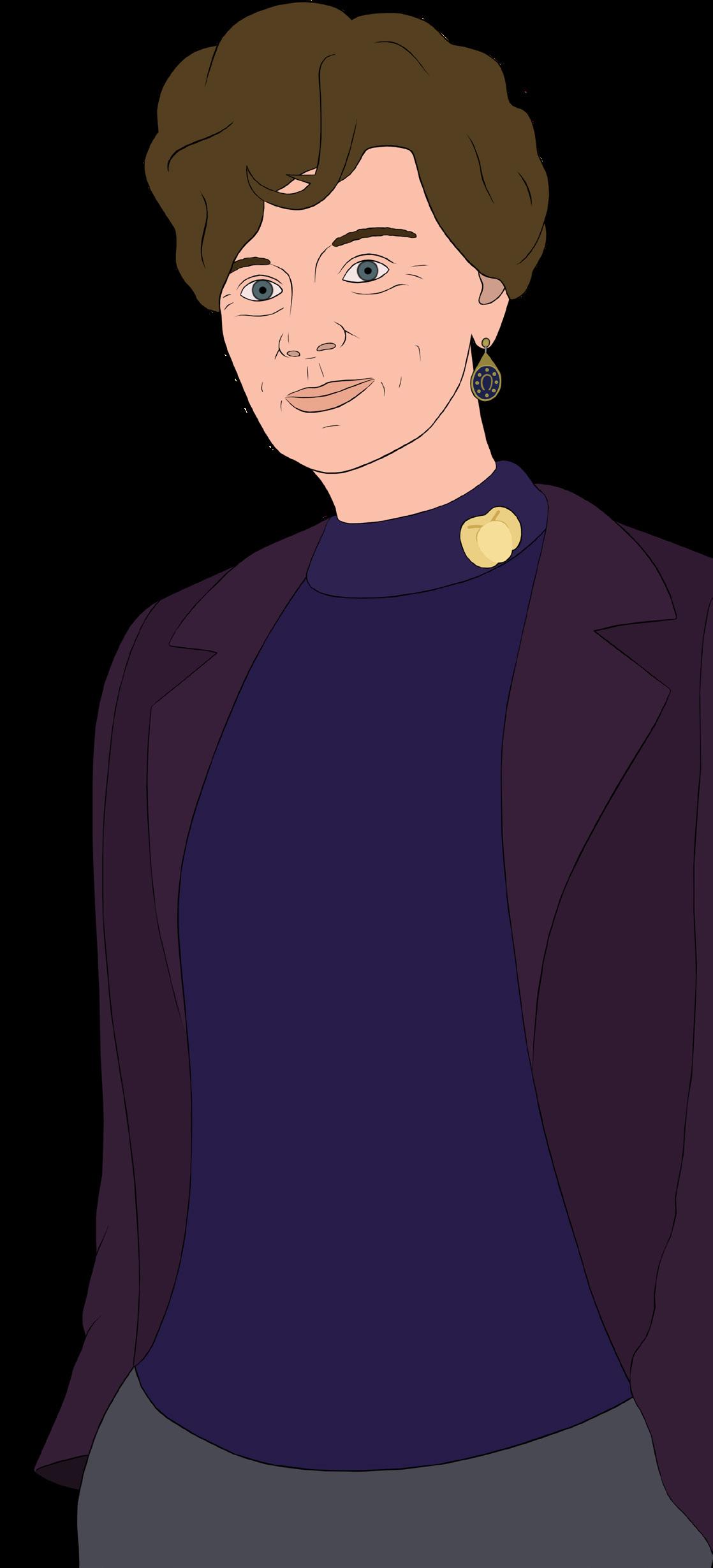
25
AFLEVERING 1: HEERSER OVER ALLES
If I were to review this episode alone, I wouldn’t bother. I’d find some excuse and you’d look at a giant photo of Wendy van Dijk here or something. There’s nothing to say about this episode.
I mean, it’s fine. It’s alright. A solid adaptation. But I don’t have anything more to add. Hats off to TimeLordMaster108 for somehow writing three full paragraphs about it. Perhaps he should do this column.
AFLEVERING 2: DAS OMEGA-GERÄT
Fortunately, there’s also this one to talk about.
This episode starts by confusing the heck out of me. Last time we had TARDIS taking off, then Oplichter arrived. Now he spreads terror around the planet, but... is interrupted by TARDIS crew? Whahuh? Did someone forget their wallet? Why are they back, I thought the whole tragic irony being set up is that they just barely missed the Oplichter? Is this completely different planet? Am I dumb? I guess I should be happy with this whole “Hu-huh! Gotcha, villain!”, which makes De Dokter look smart, but I must have missed the moment they predicted that he’s even gonna show up. Or I just overthink things – which is likely, I’m known for doing this.
Meanwhile on Gallifrey (it’s been a while since I last got to do this joke!), Stijntje and Borusa come to enlist the help of Sisterhood of Karn:
“Please help us save our viewing figures.”
“No.”
“Please?”
“No.”
“Please?”
“Look, are you adapting Endgame or Revelation? Iirc, we only appear during the funeral at the end.”
“But we are Dutch, we’re gonna be cooler! C’mon Ohila, I know you want to appear in a foreign
CLARIFICATION FROM DDWF
The first episode of Eindspel, an adaptation of Masters of All, takes place on the mining planet of Nixyce VII. At the end of the episode, the Oplichter arrives on that planet to meet with the Daleks.
The second episode takes place on the planet Rellasch, which is the planet featured in the opening scene of Doctor Who: Endgame. These are not the same planet. The Dokter just tracks the Daleks to Rellasch, but gets there earlier than intended.
adaptation, who wouldn’t? It’s prestige and stuff.”
“You have a point. What do you wanna know then?”
“Where is De Oplichter?”
“Haven’t you read the script? He’s sunbathing on Pleasure Planet and he’s going to enjoy himself until The Dale-“
“IT’S THE DUTCH VERSION, HE’S THE BIG BAD!”
“Oh, right, sorry. He’s on Rellasch, builds the Omega Machine, and De Dokter looks for her wallet or something-“
“De Dokter’s in danger? I had to do something!
Dokter Wie: Eindspel
26
Dokter Wie: Eindspel
Borusa, prepare the Time Scoop! Wait, if Oplichter took The Valeyard’s place, does that mean The Valeyard took his and is now sunbathing on Pleas-“ “Look, do not overthink it. That’s the job of that boy with keys over there.”
Indeed. Anyway, Stijntje timescoops to Rellasch... alone. Considering that we know The Daleks are at play, wouldn’t it make sense to send some CIA or The Order of Rassilon unit there? Universe is at stake and stuff. The rest of the episode isn’t particularly ambitious - it’s fighting. Fight, fight, fight, De Dokter gets solemnly beaten, half of the cast fell into custody. But De Dokter won’t give up, and alongside Evert follows The Daleks to.. Ancient Rome? Ok, this is gonna be interesting.

Don’t take my gags too seriously – this episode is pretty good. It introduces some intriguing elements... and some worrying ones. Ultimately, this is a setup for further plot, not really a standalone, so the light in which we’re gonna see it will depend on what’s about to come next. Hopefully it’s something good.
WIDWWA
27


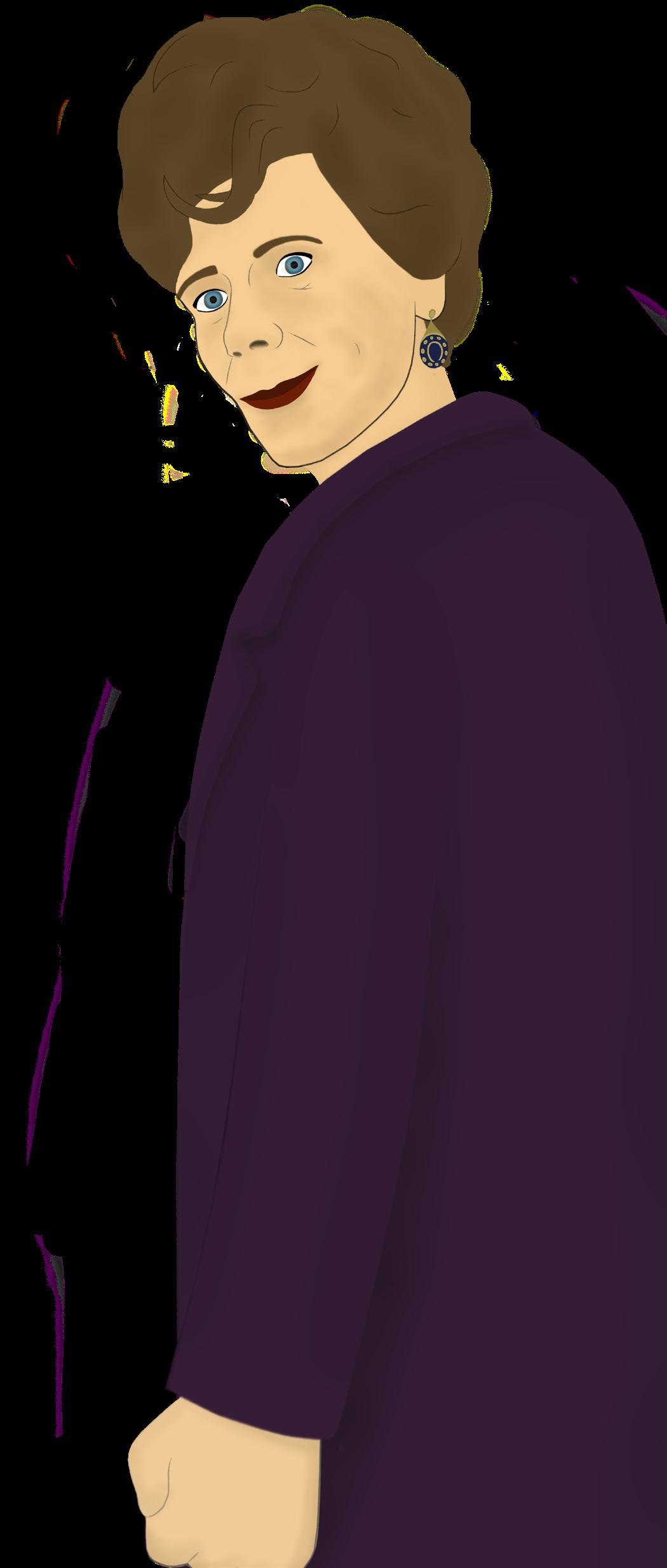
The Doctor’s QUOTE of the Month “Never took Chaucher for a tachyon guy, but there we are!” - The Fourteenth Doctor, The Printer Issue 06 - April 2022 EDITOR Benjamin Windibank CHARACTER DESIGNS Will Maddox ADDITIONAL FEATURES Toffa, Tadeusz Cisłak REVIEWS Tadeusz Cisłak, Robert Morrison 28
next issue...
Doctor Who Returns!
Join the Communuity!
The WIDWWA community has been based on Discord since May 2021, and is currently a thriving community with over 45 members. But we don’t want to stop there... as long as your a WIDWWA fan and want to contribute a positive non-toxic discussion, and follow all the rules of the server - please come along and join.
Details on how to join the Discord server can be found on the twitter account @ WIDWWA. Additionally, there is some information on the YouTube community tab. If you still can’t get on, don’t be afraid to email DDWF at widwwa1989@gmail.com
WIDWWA has a wiki covering all inuniverse content at widwwa.miraheze.org

The blog with new releases can be found at widwwa.wordpress.com
Submit Fan Fiction
Your fan fiction could be here next month and in future months! All you need to do, to be in with a chance of being featured, is to come up with a title, synopsis and the first 200 words of your story and then send it to widwwa1989@gmail.com, whereby if I like it, I will ask you to write a full 2500-3000 word story, which will be featured in a future issue.
If you do not receive a response, then I will have chosen not to go ahead with your story, at this present time.
Please can all stories be original, feature a WIDWWA TARDIS team and not feature any returning monsters, unless I ask you to during the writing process.
To submit a story, please email widwwa1989@gmail.com
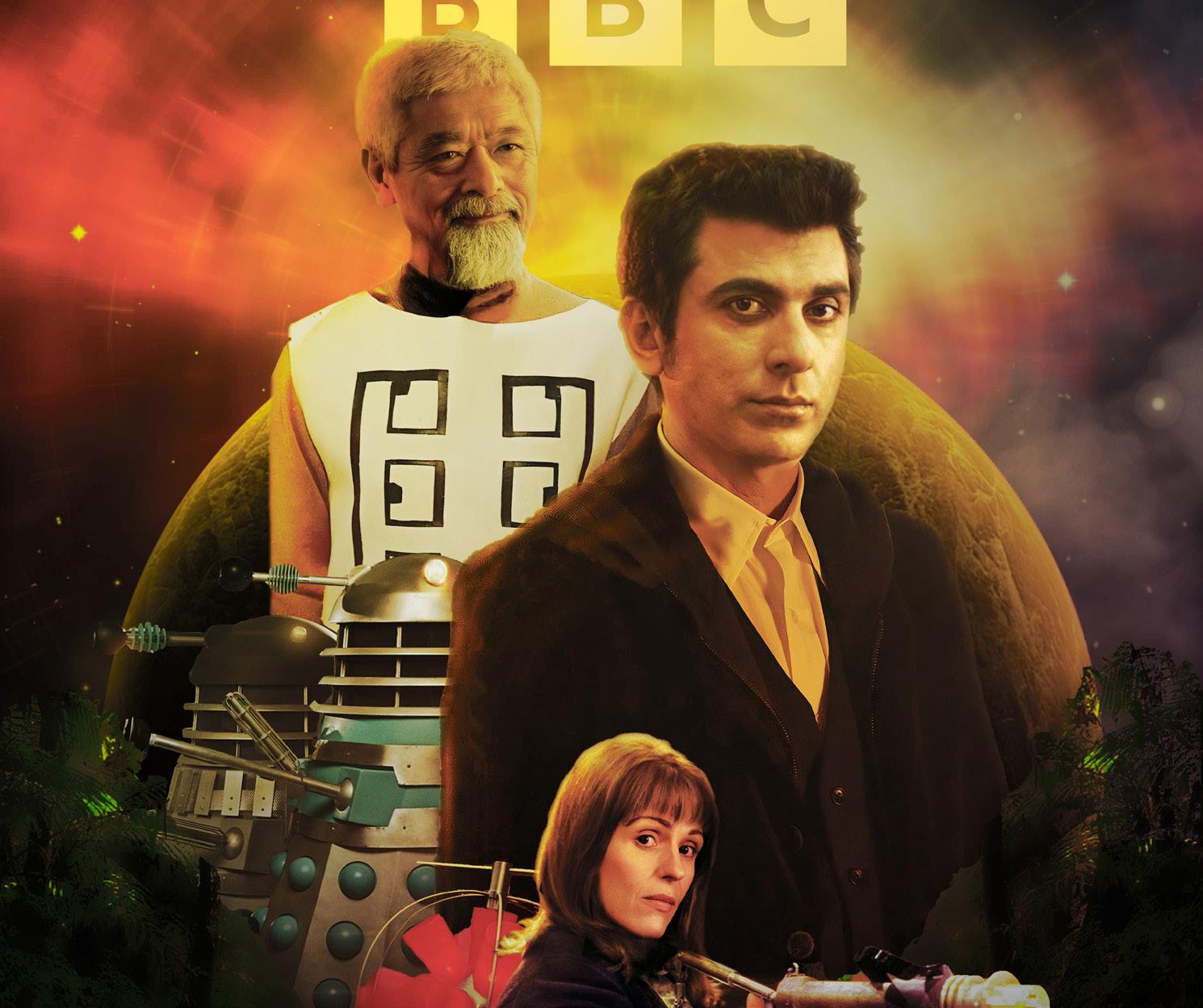
29
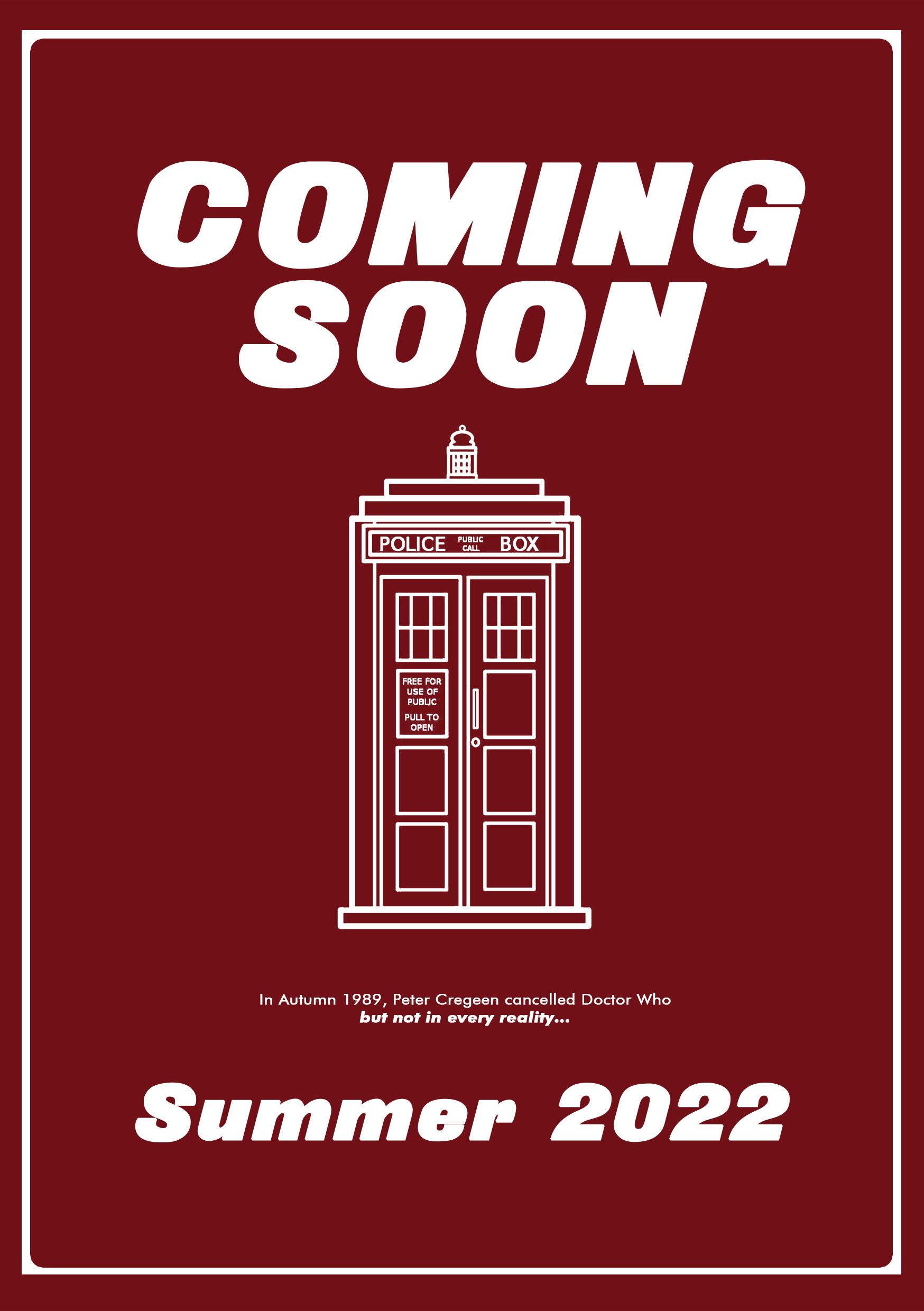























 FEATURE BY Tadeusz Cisłak
FEATURE BY Tadeusz Cisłak








 Doctor Who’s traditional annual, a publication once-a-year since 1965, seized publishing after the 1985 edition. For the 30th Anniversary, the Annual returned,
Doctor Who’s traditional annual, a publication once-a-year since 1965, seized publishing after the 1985 edition. For the 30th Anniversary, the Annual returned,
















 accompanied Paterson Joseph’s original era as the Doctor.
accompanied Paterson Joseph’s original era as the Doctor.








